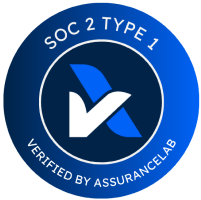BLOG
Database Replication and Migration Resources For Enterprise Teams
News, stories and updates from TapData
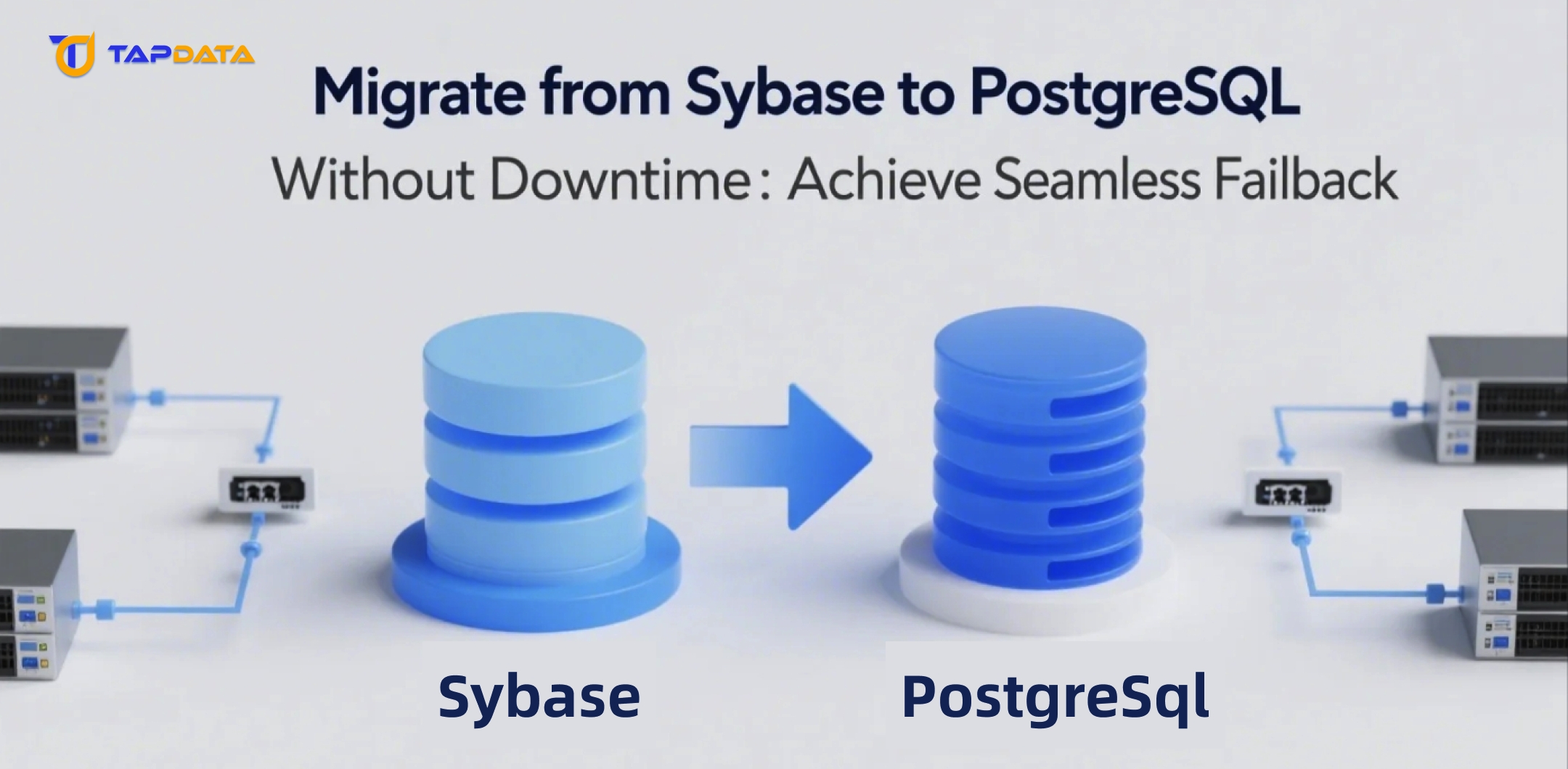
Migrate from Sybase to PostgreSQL Without Downtime: Achieve Seamless Failback
In response to rising demands for data reliability and regulatory compliance, a leading public sector organization embarked on a critical project to migrate its core healthcare and public health information systems from Sybase ASE to PostgreSQL. Facing the imminent end-of-support for Sybase ASE and increasing performance bottlenecks, the organization prioritized a seamless, zero-downtime migration strategy. This case study explores how TapData enabled real-time, bi-directional database synchronization to ensure business continuity, minimal risk, and a smooth transition to a modern, high-availability PostgreSQL environment. Overview This project involved the migration of mission-critical applications from using a Sybase ASE database to using a...
Apr 24, 2025
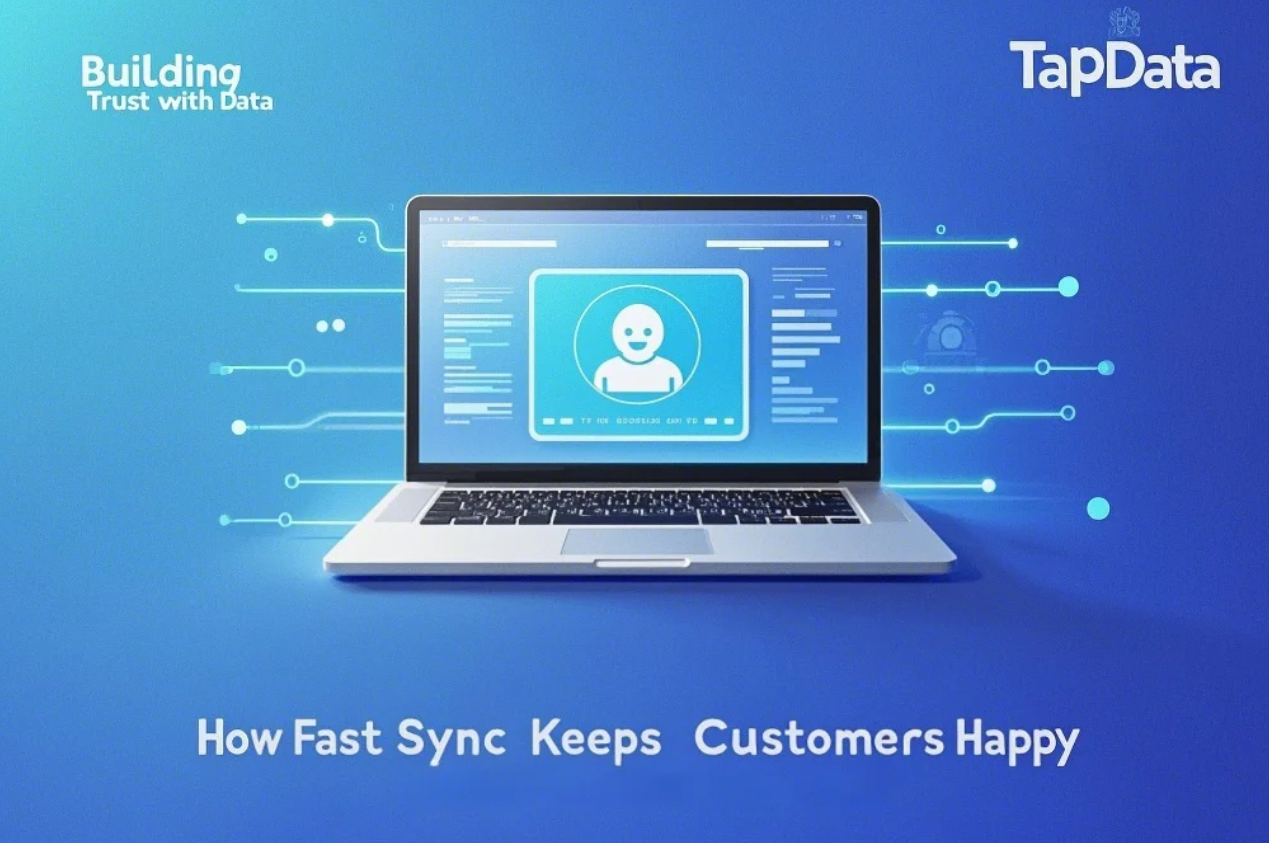
Building Trust with Data: How Fast Sync Wins Customers
In today’s business world, trust is crucial. Customers want to be confident that they can rely on you for accurate orders, quick support, and the safe handling of their information. Data plays a key role in making this happen. However, data isn’t useful if it’s slow or outdated. Fast data sync—the ability to move information instantly between systems—can be the key to keeping customers happy and loyal. In this blog, we’ll explain why trust is important, how slow data can damage it, and how fast sync can help rebuild that trust. Plus, we’ll share simple tips that any business can...
Mar 06, 2025
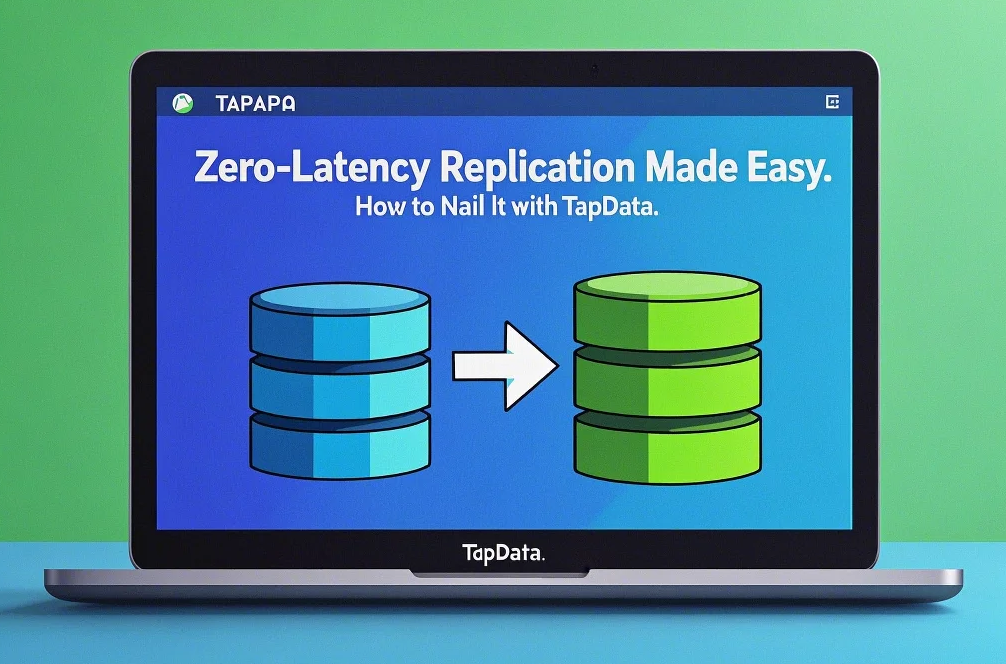
Zero-Latency Data Replication: How to Nail It
In today's fast-paced digital world, data is more than just valuable—it drives decisions, improves customer experiences, and keeps operations running smoothly. However, data is only useful if it is up to date. That’s where zero-latency replication comes in. This advanced data management approach ensures that any change in one database is instantly reflected in another, with no noticeable delay. Think of a global e-commerce business that updates inventory in real time across different regions or a healthcare system that syncs patient records instantly without errors. Zero-latency replication makes this possible, and in today’s data-driven world, it’s no longer optional—it’s essential....
Mar 05, 2025
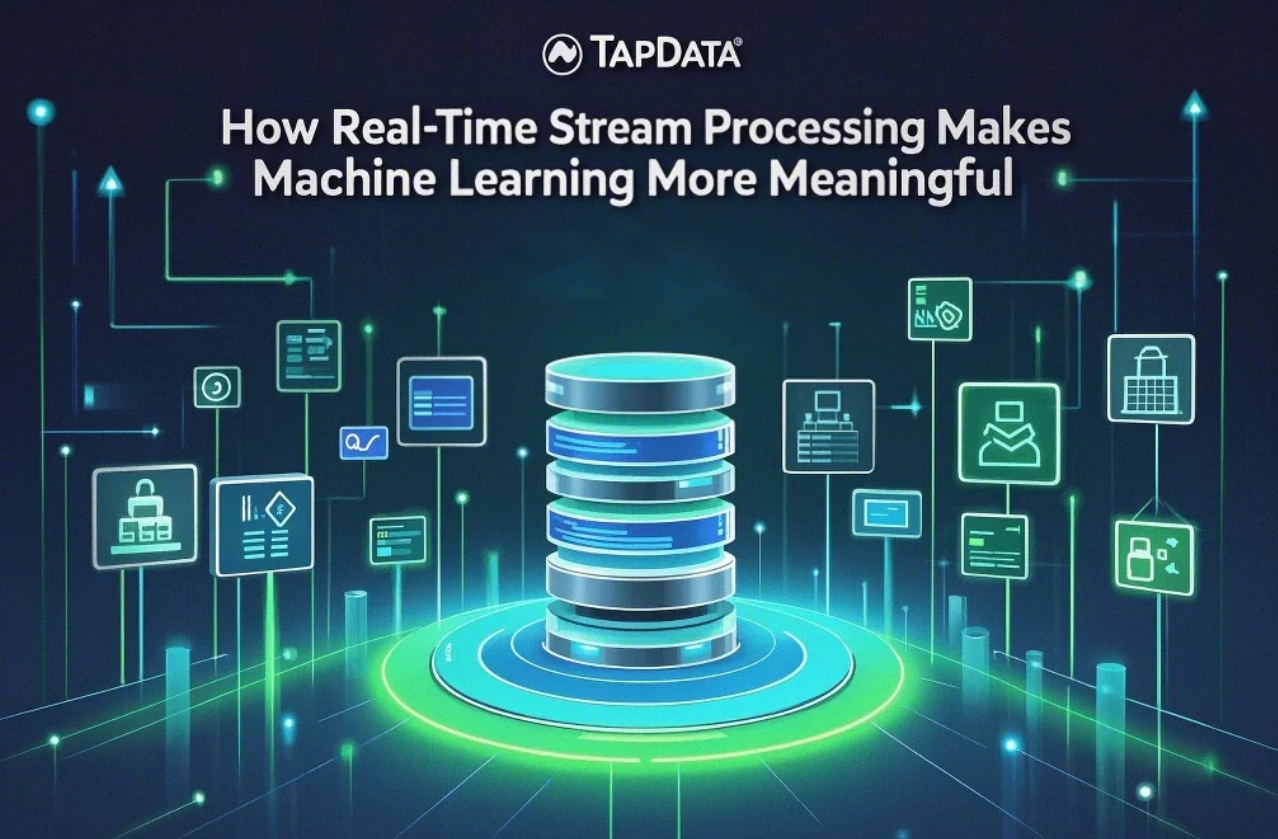
How Real-Time Stream Processing Makes Machine Learning More Powerful
In the data-driven world of 2025, machine learning (ML) powers everything from business insights to customer experiences. However, the effectiveness of ML depends on having up-to-date data—a challenge solved by real-time stream processing. Platforms like Tapdata play a key role in this by delivering real-time data to the data sources ML models depend on, ensuring predictions are not only accurate but also relevant when needed most. This blog explores how real-time stream processing improves machine learning by keeping data fresh and accessible. Tapdata makes this possible by syncing data to the data sources ML models use. From fraud detection to...
Feb 26, 2025
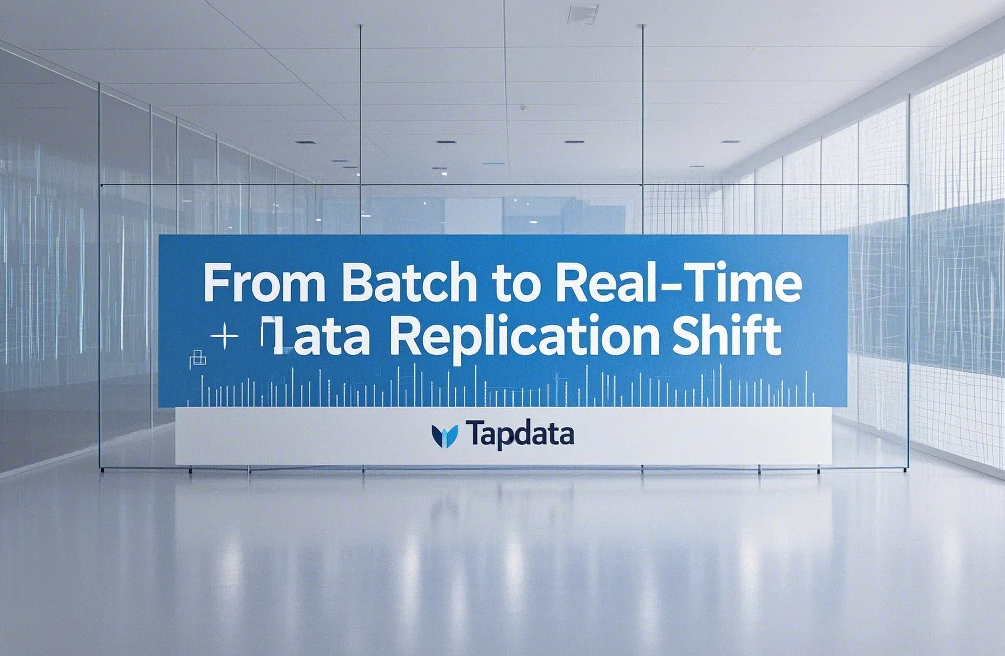
From Batch to Instant: The 2025 Shift to Real-Time Data Replication
In the not-so-distant past, batch processing was the backbone of data management—a reliable, if slow, workhorse that powered everything from payroll systems to inventory updates. Data was collected, processed, and stored in scheduled chunks, often overnight or during off-peak hours. But as we step deeper into 2025, the world has changed. Businesses now operate in a 24/7 digital economy where decisions must be made in the blink of an eye, and customers expect instant responses. This seismic shift has propelled real-time data replication to the forefront, transforming how organizations manage, synchronize, and leverage their data. At Tapdata, we’re witnessing this...
Feb 25, 2025
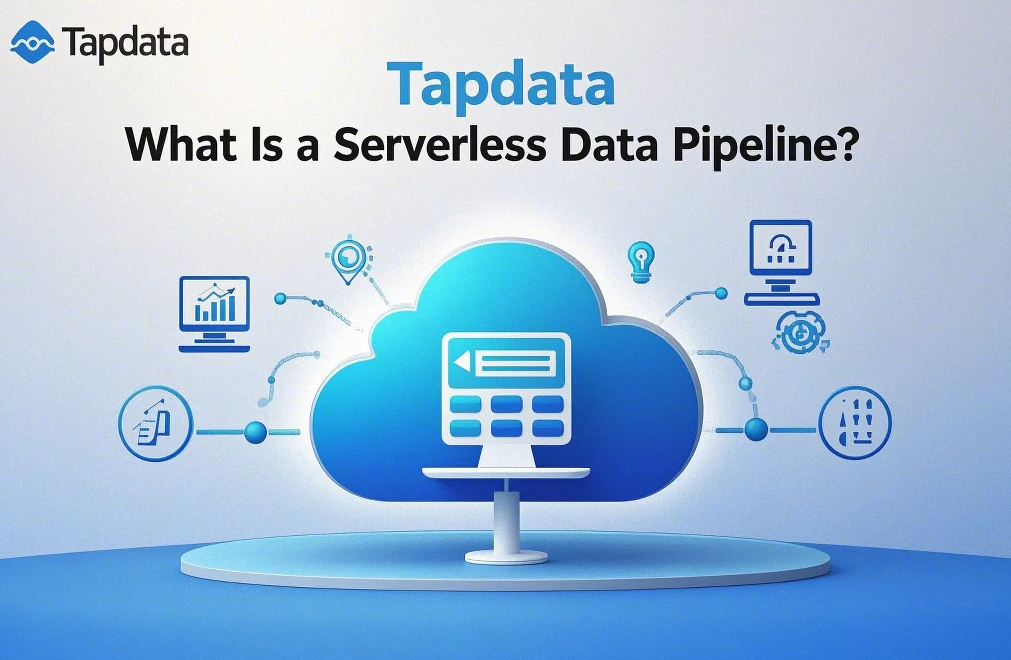
What Is Serverless Data Pipeline? And how Tapdata Empowers Businesses to Build serverless Data Pipelines
As businesses generate more and more data, managing and processing it efficiently has become a top priority. Serverless data pipelines have emerged as a powerful solution to help organizations integrate, process, and transform data at scale, without worrying about managing infrastructure. In this guide, we’ll explore what a serverless data pipeline is, its benefits, and how Tapdata, an advanced ETL tool, can help businesses build and scale serverless data pipelines. What is a Serverless Data Pipeline? A serverless data pipeline is a cloud-based architecture that automates the replication, transformation, and processing of data without requiring the user to manage the...
Feb 19, 2025
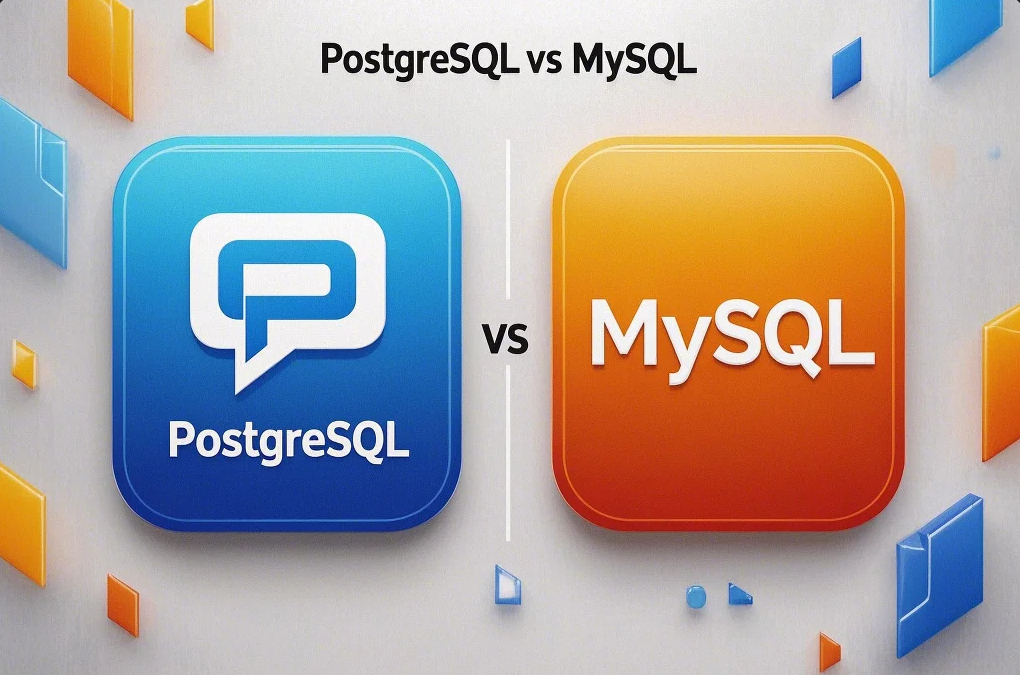
PostgreSQL vs MySQL: Key Considerations for Your Project
Choosing between PostgreSQL and MySQL is a big decision in designing a database system that aligns with your project objectives. While both leverage SQL, their approaches to data handling, scalability, and extensibility differ significantly. Let’s explore their core strengths, architectures, and ideal use cases to guide your decision. A Fresh Look at Database Architecture PostgreSQL: Flexibility and Advanced Features PostgreSQL is renowned for its adaptability in handling complex queries and diverse workloads. It isn’t just a typical relational database; it’s built with features that cater to modern data challenges. Its support for advanced indexing methods—such as GIN, GiST, and BRIN—helps...
Feb 17, 2025

Emerging Data Management Trends Shaping 2025
Imagine a world where decisions happen instantly, tailored to your needs, and powered by data that u...
Feb 12, 2025
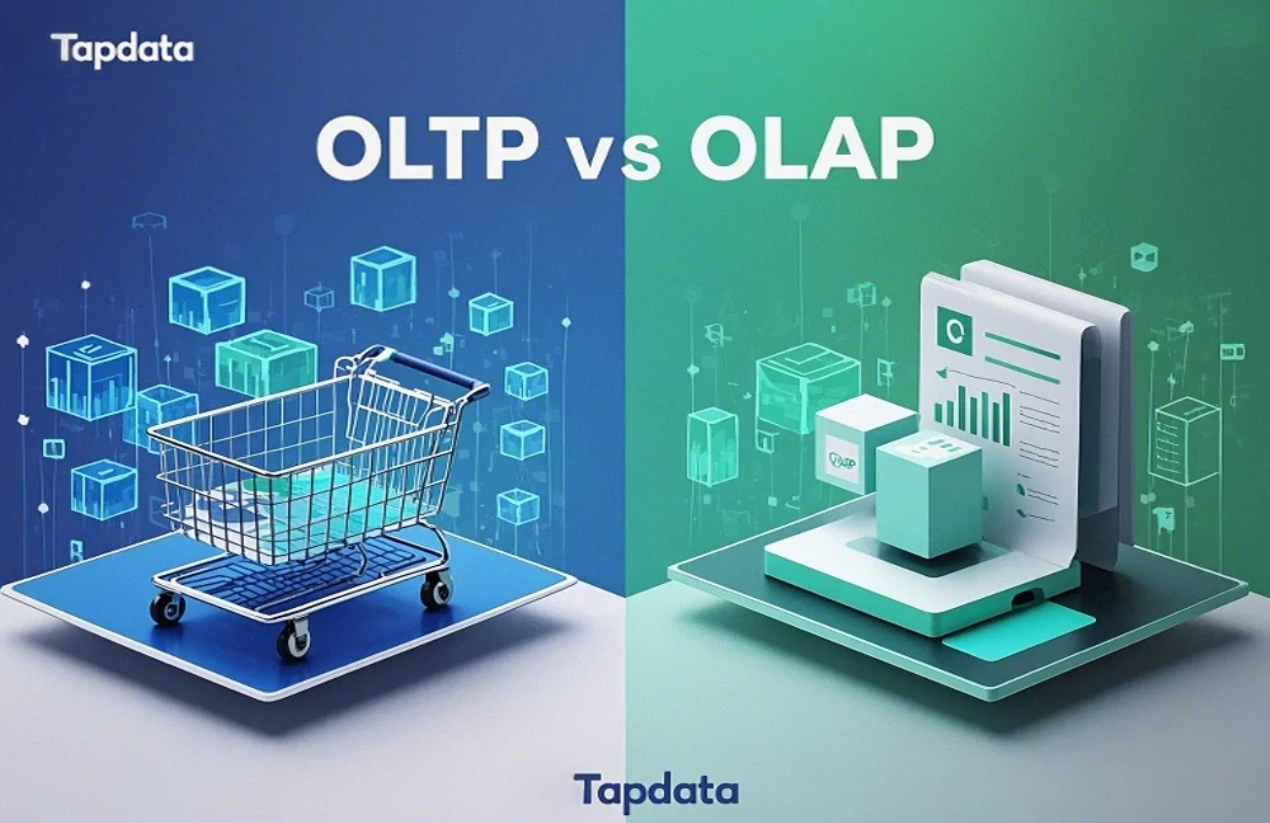
OLTP vs OLAP: Key Differences and Use Cases for Data Management
In the world of data management and analytics, two important concepts often come up: OLTP (Online Tr...
Feb 12, 2025
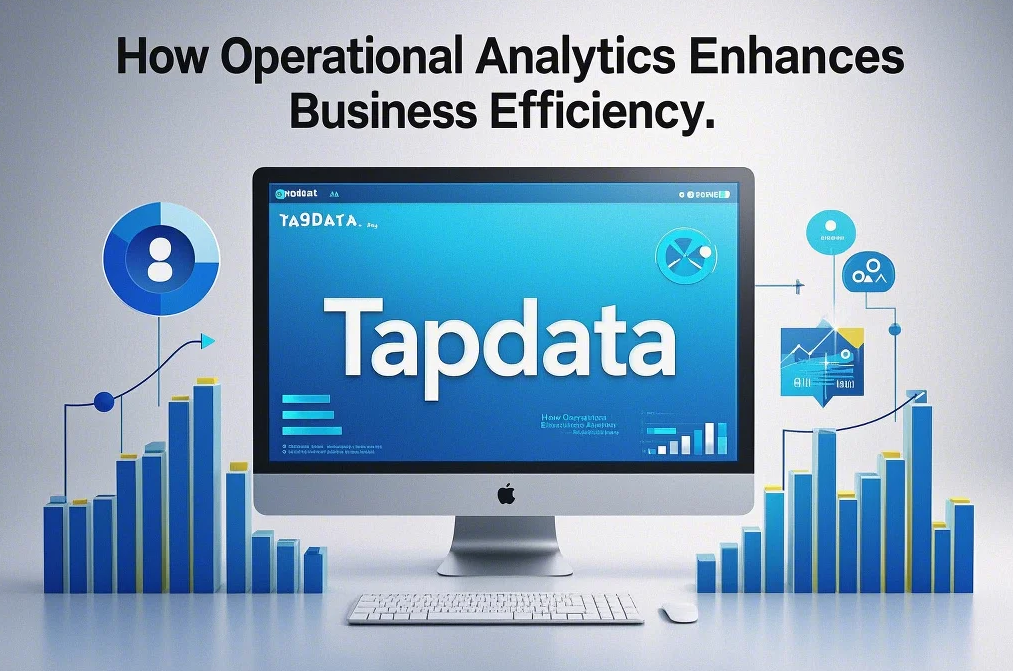
How Operational Analytics Enhances Business Efficiency
In today’s fast-paced business environment, leveraging data from daily operations is key to identify...
Feb 06, 2025
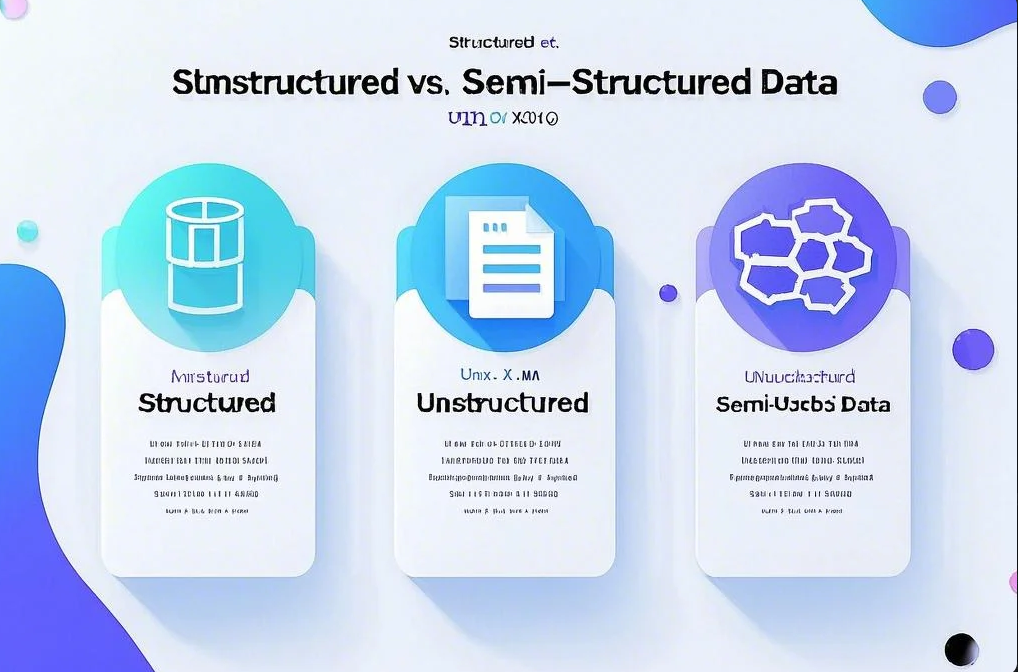
What are unstructured, structured, and semi-structured data types?
In the world of data management and analytics, understanding the different types of data is crucial ...
Feb 05, 2025
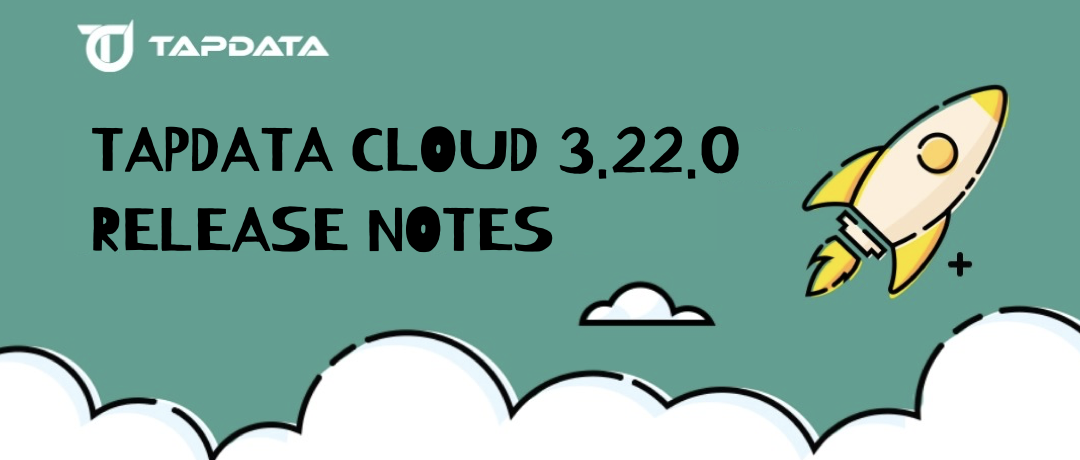
TapData Cloud 3.22.0 Release Notes
Bug Fixes Fixed an issue where heartbeat task startup failures prevented data synchronization tasks ...
Jan 24, 2025

Emerging Data Management Trends Shaping 2025
Data management plays a transformative role in shaping the future of businesses. By 2025, global data creation is expected to surpass 394 zettabytes, with the data and analytics market projected to reach $17.7 trillion. Companies adopting generative AI could unlock an additional $2.6 to $4.4 trillion in value. However, these advancements bring challenges like technical debt and regulatory compliance. Emerging data management trends demand your attention. Businesses must balance sustainability with profitability while optimizing infrastructure. Modernized governance and intelligent architectures are essential for managing risks and leveraging AI. Aligning strategies with these trends ensures you stay competitive in a rapidly...
Jan 24, 2025

Key Trends in Data Integration for Smarter Businesses
Data integration plays a vital role in helping businesses thrive in today’s fast-paced digital lands...
Jan 21, 2025

What is Data Lake?
A data lake is a large, affordable place to store all kinds of data. It can hold both structured dat...
Jan 21, 2025
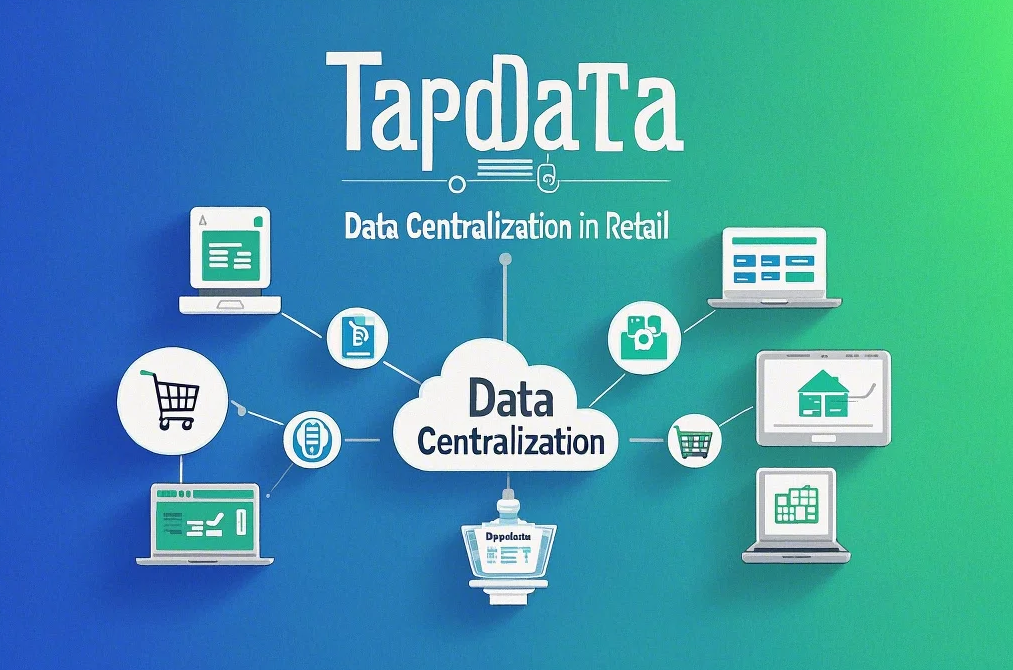
Why Data Centralization Matters for Retail
Retailers face unique challenges in managing their data because of the fast pace and high volume of the industry. Retail is one of the largest industries in the China, U.S, etc., covering activities like wholesaling, selling directly to consumers, and just-in-time delivery. A single company might handle one or all of these activities. No matter the focus, retailers deal with complex supply chains, inventory management, and distribution channels like physical stores and eCommerce platforms. Since retail is a low-margin, high-volume business, managing data effectively is crucial for: Streamlined Supply Chains and Inventory: Retailers need real-time data about purchases and deliveries...
Jan 20, 2025

How to Securely Replicate Data in 2025: Maximize control and data security with TapData's Hybrid Deployment
TapData's New Hybrid Deployment: Run Secure Pipelines Within Your secure Network or vpc at No Extra Cost. For organizations looking to replicate databases securely, TapData offers a powerful hybrid deployment model that combines the flexibility of cloud-based management with the security of local data processing. If you want to leverage TapData’s cloud platform for seamless data pipeline management but need to keep sensitive data within your private network, TapData’s hybrid deployment is the perfect solution. With TapData, you can deploy a lightweight local agent to handle data replication while using the cloud-based control plane to manage, monitor, and orchestrate your...
Jan 15, 2025
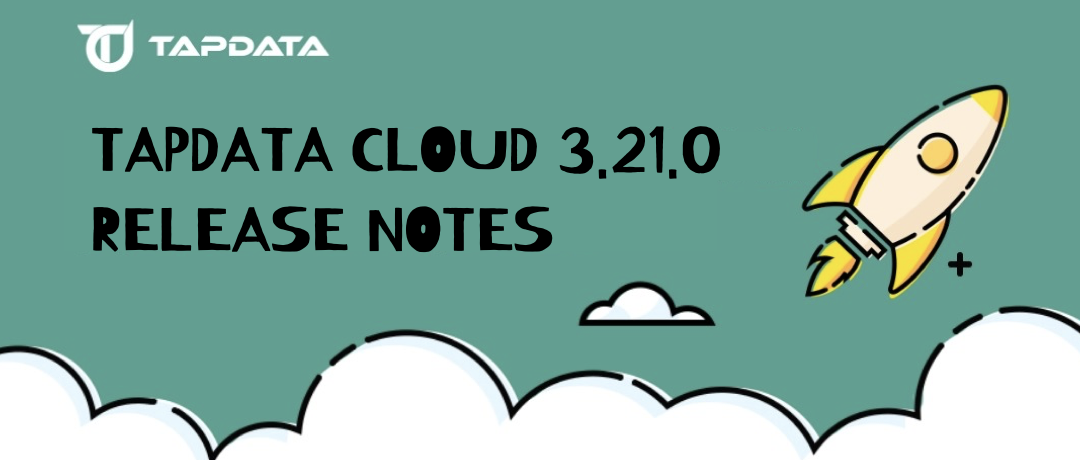
TapData Cloud 3.21.0 Release Notes
New Features Enhanced Sybase-to-PostgreSQL synchronization scenario, adding index migration and sequ...
Jan 15, 2025
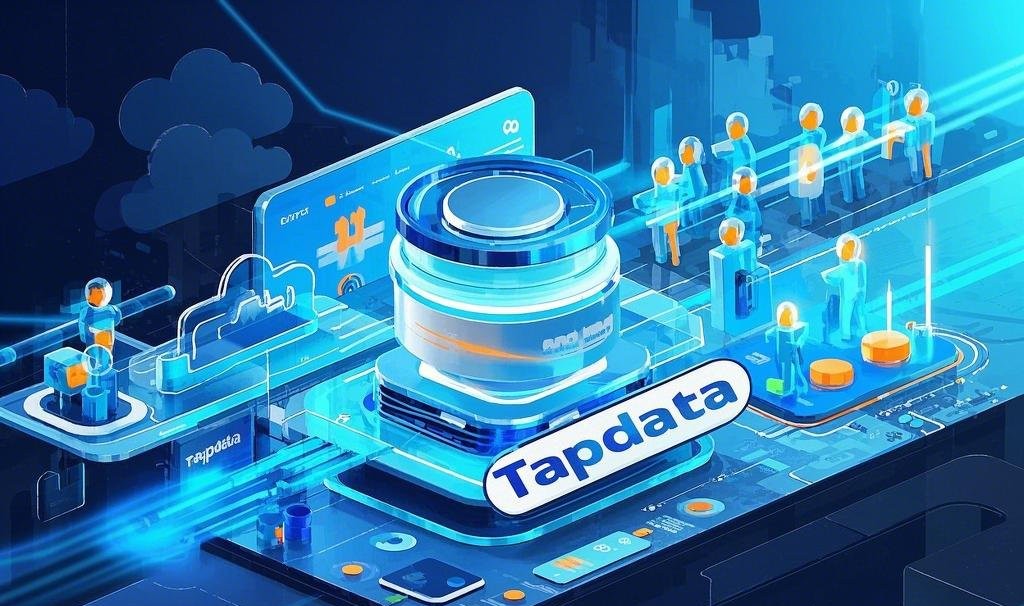
6 Reasons Why TapData is a Game-Changer for Data-Driven Teams
In today’s fast-paced world, businesses rely on data to make smart decisions, improve operations, and stay ahead of the competition. However, traditional data integration methods often fail to deliver real-time insights. That’s where TapData comes in—a real-time data integration platform that’s changing the way businesses use data. Here are five reasons why TapData is a game-changer: 1. Real-Time Data Integration for Instant Insights In many industries, waiting for batch-processed data can lead to missed opportunities, slower decision-making, and potential inefficiencies. TapData solves this issue by enabling real-time data synchronization across systems, providing your team with immediate access to the most...
Jan 13, 2025

How to get the data you need to train AI models: A Guide to Success with TapData
As a product manager, you might face a big challenge when building AI products: you need data to train your AI models, but you don’t have enough of it. Whether you’re building a completely new product or improving an existing one, you need data to make your AI work. But what happens if you don’t have enough data? Don’t worry—there are several ways to get the data you need, and there are tools available to make the process easier. In this blog, we’ll explain how you can gather data and start building your AI product even if you don’t have...
Jan 10, 2025
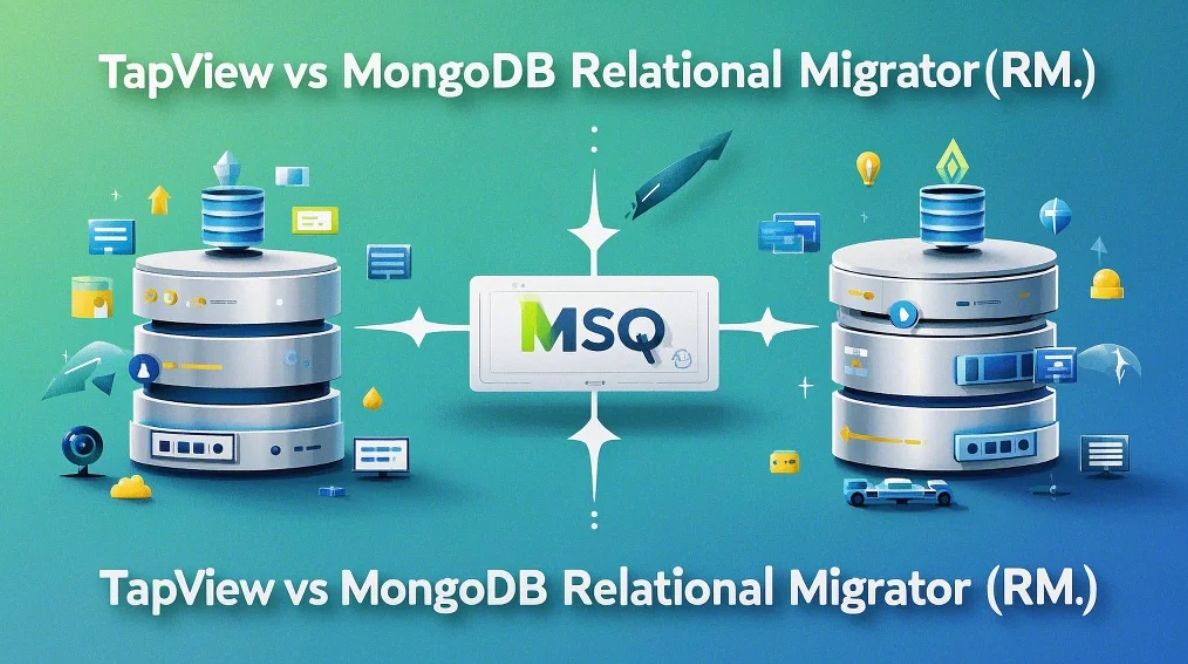
TapView Vs MongoDB Relational Migrator (RM)
In today’s fast-paced, data-driven world, businesses need real-time access to accurate data for faster decision-making. Migrating data from relational databases to MongoDB provides significant benefits like enhanced query performance, scalability, and real-time insights. MongoDB’s document-based model is perfect for handling large-scale data and delivering high-speed queries. Real-time materialized views in MongoDB are crucial as they store precomputed query results, ensuring data is always fresh and improving read performance. TapView and MongoDB Relational Migrator (RM) are two of the most popular and powerful tools for real-time data migration and synchronization from RDBMS. TapView excels in creating real-time materialized views and integrating...
Jan 02, 2025
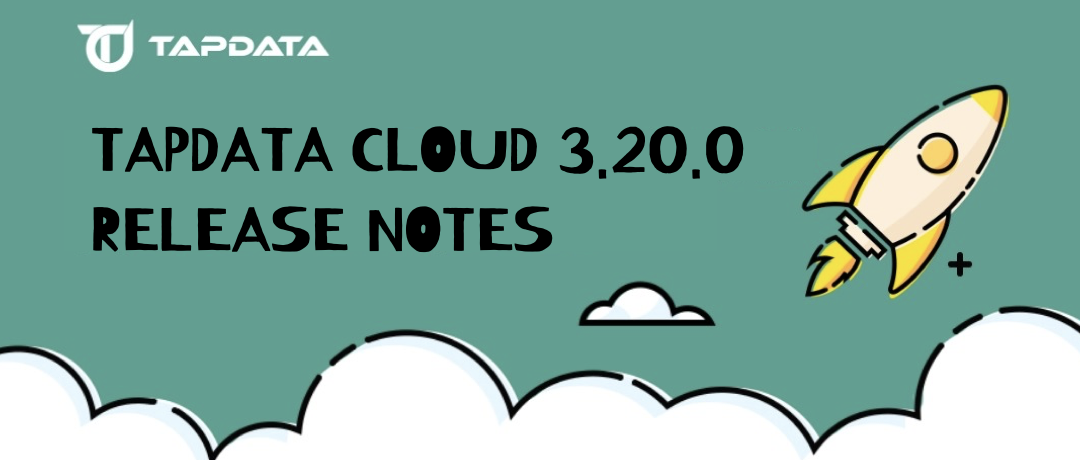
TapData Cloud 3.20.0 Release Notes
Enhancements Added the ability to download log files from the task monitoring page for easier fault diagnosis. Optimized engine startup to eliminate the need for MongoDB configuration during initialization. Expanded error code coverage and provided more detailed solution hints. Bug Fixes Fixed an issue where the system failed to start when configuring SSL connections for MongoDB as an intermediate database. Fixed an issue where data was not updated to the target during incremental synchronization when synchronizing Oracle tables with multi-column composite primary keys to GaussDB (DWS). Fixed an issue where the task incorrectly reported missing table creation privileges after synchronizing...
Dec 30, 2024
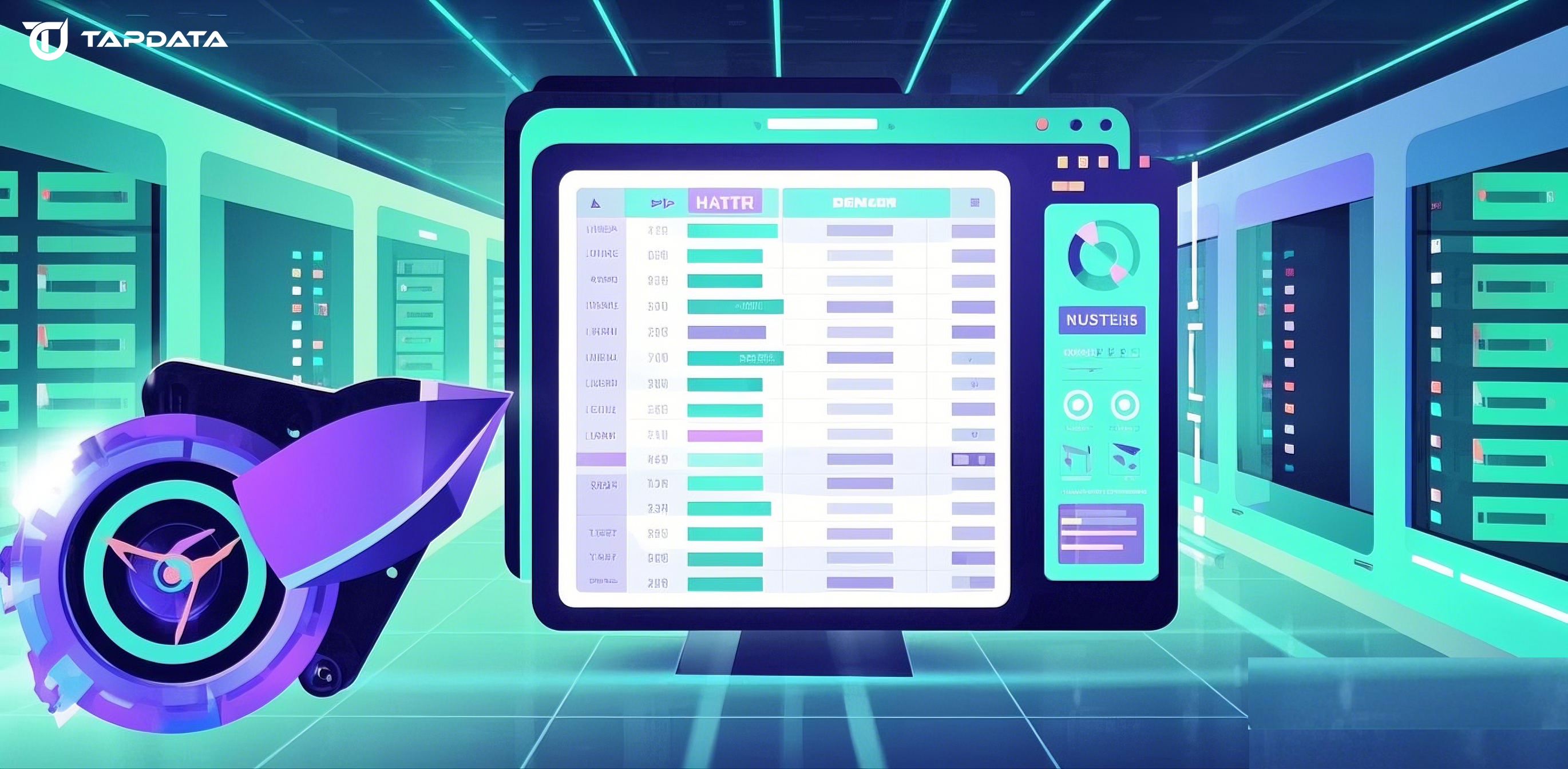
Using Materialized Views for Faster Queries
Materialized views play a crucial role in enhancing database performance. They precompute and store query results, which significantly reduces the time needed for data retrieval. By eliminating the need for repeated complex calculations, materialized views transform queries that once took minutes into operations completed in seconds. This efficiency is particularly beneficial for businesses dealing with frequent and complex queries. You can leverage materialized views to achieve remarkable query optimization, ensuring faster access to data and reducing the load on your database systems. Key Takeaways Materialized views significantly enhance database performance by precomputing and storing query results, allowing for faster data...
Dec 23, 2024

Build Real-Time Materialized Views with CDC in Just 10 Lines of Code
What is a Real-Time Updating Materialized View? A materialized view is a data structure in database ...
Dec 18, 2024

How to Build a Customer 360 View with Materialized Views
A Customer 360 view provides a comprehensive understanding of your customers by aggregating data from various sources. This holistic perspective allows you to gain insights into customer preferences, behaviors, and interactions across multiple channels. By leveraging real-time materialized views, you can enhance the efficiency of data retrieval, enabling timely updates and insights into the customer journey. This Customer 360 approach not only improves customer experience but also boosts retention rates and conversion rates, ultimately leading to increased revenues and better decision-making in marketing and service strategies. Key Takeaways A Customer 360 view aggregates data from multiple sources, providing a unified...
Dec 18, 2024

Seamless Data Migration from SAP Sybase to PostgreSQL: A Public Health Institution’s Successful Transition
Making Things Simple with TapData: Streamlining Data Pipeline Management and Replacing Tools Like OGG, Kettle, and Kafka-Based ETL Solutions” TapData simplifies data integration by removing the need to manually build and manage complex data pipelines. It offers a lightweight alternative to traditional tools like OGG, Kettle, and Kafka-based ETL solutions. With the combination of CDC (Change Data Capture), stream processing, and data integration, TapData speeds up data movement within warehouses. This helps businesses use their data more effectively and brings the “real-time data warehouse” concept into reality. TapData is constantly improving its product and user experience while exploring the unique...
Dec 18, 2024
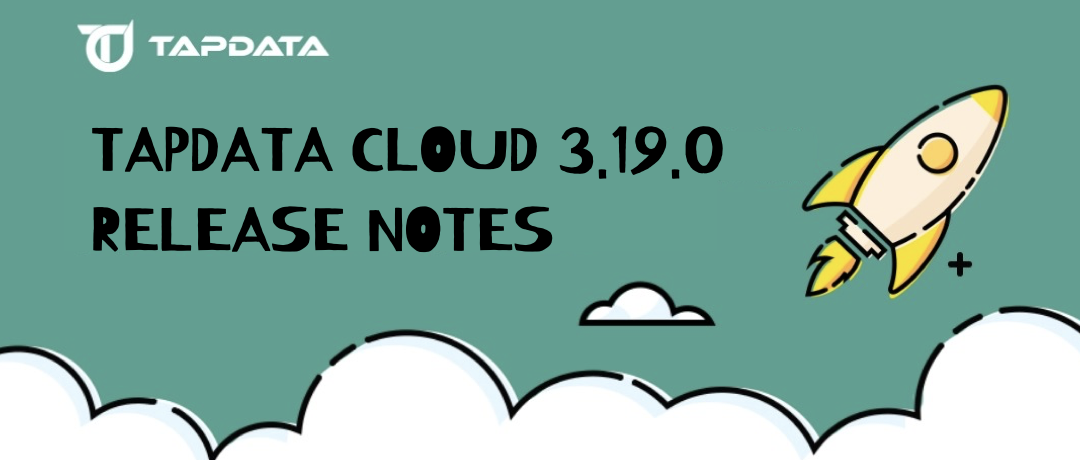
TapData Cloud 3.19.0 Release Notes
Enhancements Optimized and added new engine error codes to help users quickly locate the cause of issues. Bug Fixes Fixed an issue where the system failed to start when configuring SSL connections for MongoDB as an intermediate database. Fixed an issue where data was not updated to the target during incremental synchronization when synchronizing Oracle tables with multi-column composite primary keys to GaussDB (DWS). Fixed an issue where the task incorrectly reported missing table creation privileges after synchronizing some tables to MySQL. Fixed a system error that occurred when viewing the source node list of a data mining task. Fixed...
Dec 17, 2024

How to Optimize Queries with Materialized Views in MongoDB
Materialized views in MongoDB provide an effective solution to boost query performance by storing precomputed query results. With materialized views, data doesn't need to be recalculated for every request, offering quick access to stored results and greatly reducing computational overhead. This feature is particularly beneficial for managing complex aggregations or frequently accessed data. By utilizing materialized views, you can enhance your database operations, achieving faster response times and more efficient resource utilization. Whether you're dealing with real-time analytics or static datasets, materialized views simplify query processes and elevate overall performance. Key Takeaways Materialized views store precomputed query results, significantly improving...
Dec 13, 2024

Mastering Change Data Capture for Efficient Data Replication
Change data capture empowers you to track and manage incremental changes in your data sources. It en...
Dec 05, 2024

How Change Data Capture Powers Real-Time Data Pipelines
Change Data Capture (CDC) transforms how you handle data by capturing changes as they happen. This m...
Dec 03, 2024

TapData Cloud 3.18.0 Release Notes
Enhancements Enabled copy all selected table names during task configuration, improving operational ...
Nov 29, 2024

How to Synchronize Data from Yandex Metrica to MongoDB
In today's digital landscape, data analytics is key to understanding user behavior, optimizing...
Nov 26, 2024

Implementing CDC for Real-Time Data Replication
Change data capture (CDC) is pivotal in modern data workflows by facilitating real-time data integration. CDC acts as a method that identifies and tracks changes in your database, enabling seamless data replication across platforms. This process ensures that your data remains consistent and up-to-date, which is essential for businesses aiming to make data-driven decisions. By implementing CDC, you can achieve near-zero downtime during migrations to the cloud, enhancing both flexibility and efficiency in your data management strategies. Understanding Change Data Capture (CDC) What is Change Data Capture (CDC)? Change Data Capture, or CDC, is a process that identifies and tracks...
Nov 18, 2024

TapData Cloud 3.17.0 Release Notes
New Features Added support for real-time synchronization of PostgreSQL partitioned tables to SQL Ser...
Nov 15, 2024

Integrating MySQL with ClickHouse: A Comprehensive Guide
In today's data-driven world, integrating MySQL with ClickHouse can significantly enhance your...
Nov 07, 2024

TapData Achieves SOC2 Type 2 Certification: Elevating Data Security Standards for Customers
TapData is proud to announce its successful completion of the SOC2 Type 2 certification, a globally ...
Nov 06, 2024
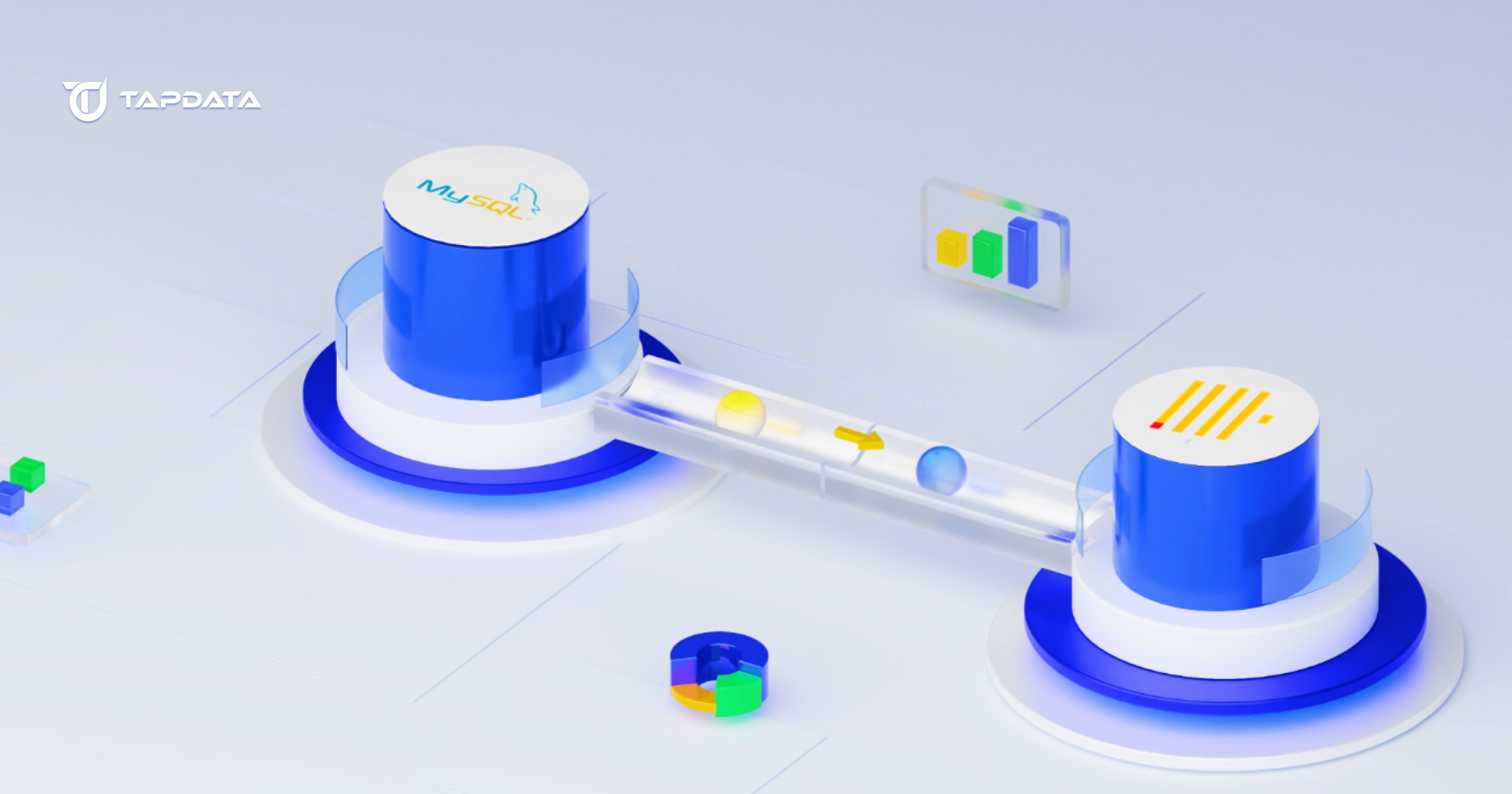
Leveraging ClickHouse for Advanced Analytics: A Comprehensive Guide to Real-Time Data Replication from MySQL to ClickHouse
In today's data-driven world, organizations need to harness advanced analytics to stay competitive. ClickHouse, a high-performance columnar database management system, enables rapid data processing and complex analytics. This guide will walk you through real-time data migration from MySQL, Oracle, or MongoDB to ClickHouse using TapData, alongside best practices for building an effective data pipeline. Why Migrate data to ClickHouse? Migrating your data to ClickHouse can be transformative. Here are several key advantages: 1. High Query Performance ClickHouse is designed for large datasets with minimal latency. Its columnar storage model allows for rapid access to specific data segments, significantly improving query...
Nov 05, 2024
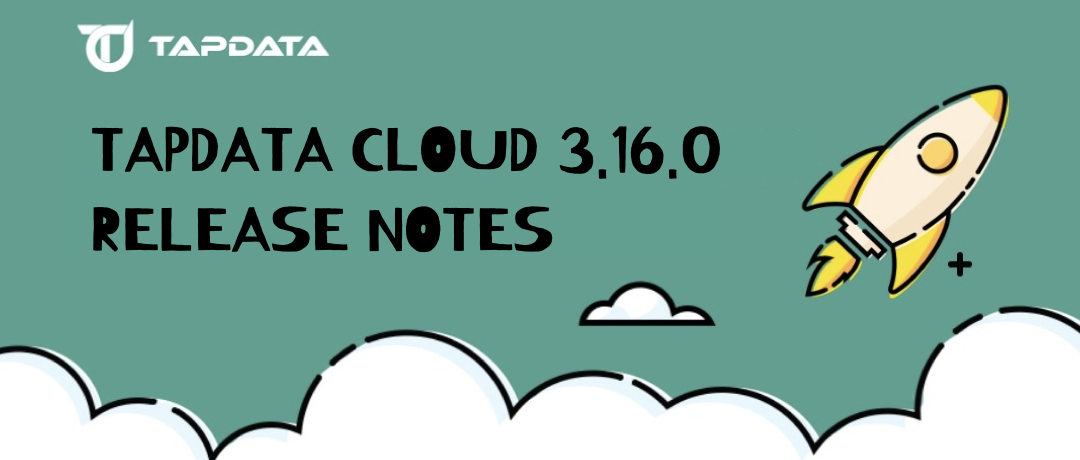
TapData Cloud 3.16.0 Release Notes
New Features Added HTTPS connection support for Elasticsearch data sources, enhancing data transmiss...
Oct 30, 2024

How to Seamlessly Move Your Database from MongoDB to PostgreSQL
Database migration plays a crucial role in data management. This process involves transferring data from one database to another, ensuring seamless transitions. A MongoDB database, known for its flexibility with a document-oriented structure, offers unique advantages. However, a Postgres database, being a powerful SQL database, provides robust data integrity and complex querying capabilities. Opting to migrate from MongoDB to Postgres can lead to enhanced performance, improved data consistency, and advanced analytics. Utilizing a reliable data migration tool is essential to ensure a smooth transition, minimizing disruptions and maintaining data accuracy. Understanding the Differences Between MongoDB and PostgreSQL Database Structure NoSQL...
Oct 30, 2024

How to Seamlessly Migrate Data Between MongoDB Databases
Data migration plays a crucial role in maintaining the efficiency and scalability of your systems. When you need to migrate data between MongoDB databases, you face unique challenges. These include ensuring data integrity and minimizing downtime. To achieve a seamless transition, you must consider several key factors. Evaluate the current data structure and dependencies. Choose the right tools for MongoDB database replication. Understanding how to migrate data from one MongoDB database to another effectively will help you maintain system performance and reliability. Preparing for Migration Assessing Current MongoDB Database Evaluating Data Structure You should start by evaluating the data structure...
Oct 24, 2024
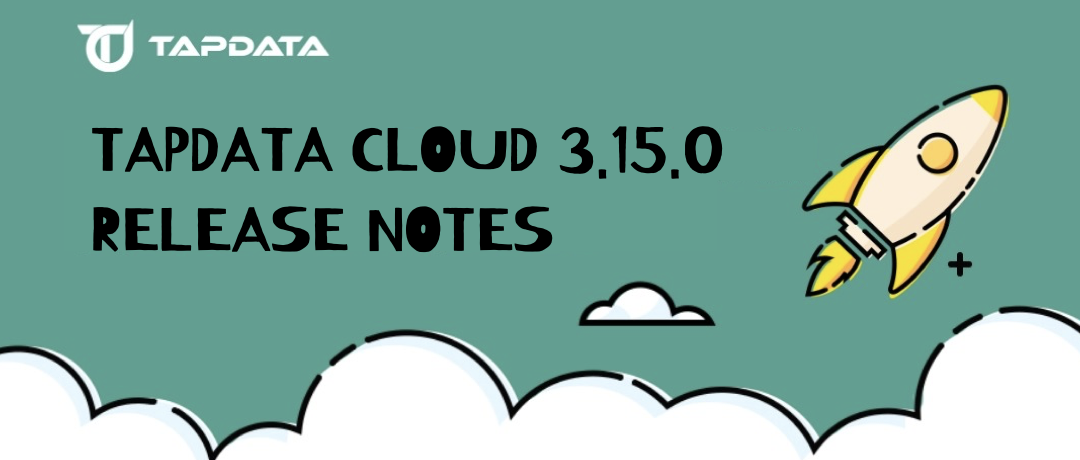
TapData Cloud 3.15.0 Release Notes
New Features Kafka-Enhanced and TiDB have passed the TapData certification testing process and have ...
Oct 17, 2024

Mastering Data Preparation: The Key to Unlocking Powerful Analytics Insights
Data preparation is crucial in the analytics process, ensuring that raw data is accurate and consistent, which is essential for obtaining meaningful insights. Understanding what is data preparation helps in addressing challenges like errors, inconsistencies, and duplications that can lead to misleading analytics. Effective data preparation significantly reduces these issues, enhancing data quality and supporting better decision-making. By preparing data for analysis, you increase the reliability of your insights, ultimately leading to higher returns on investment from your analytics initiatives. Utilizing data preparation tools can further streamline this critical step. Understanding Data Preparation Definition and Scope What is Data Preparation?...
Oct 17, 2024
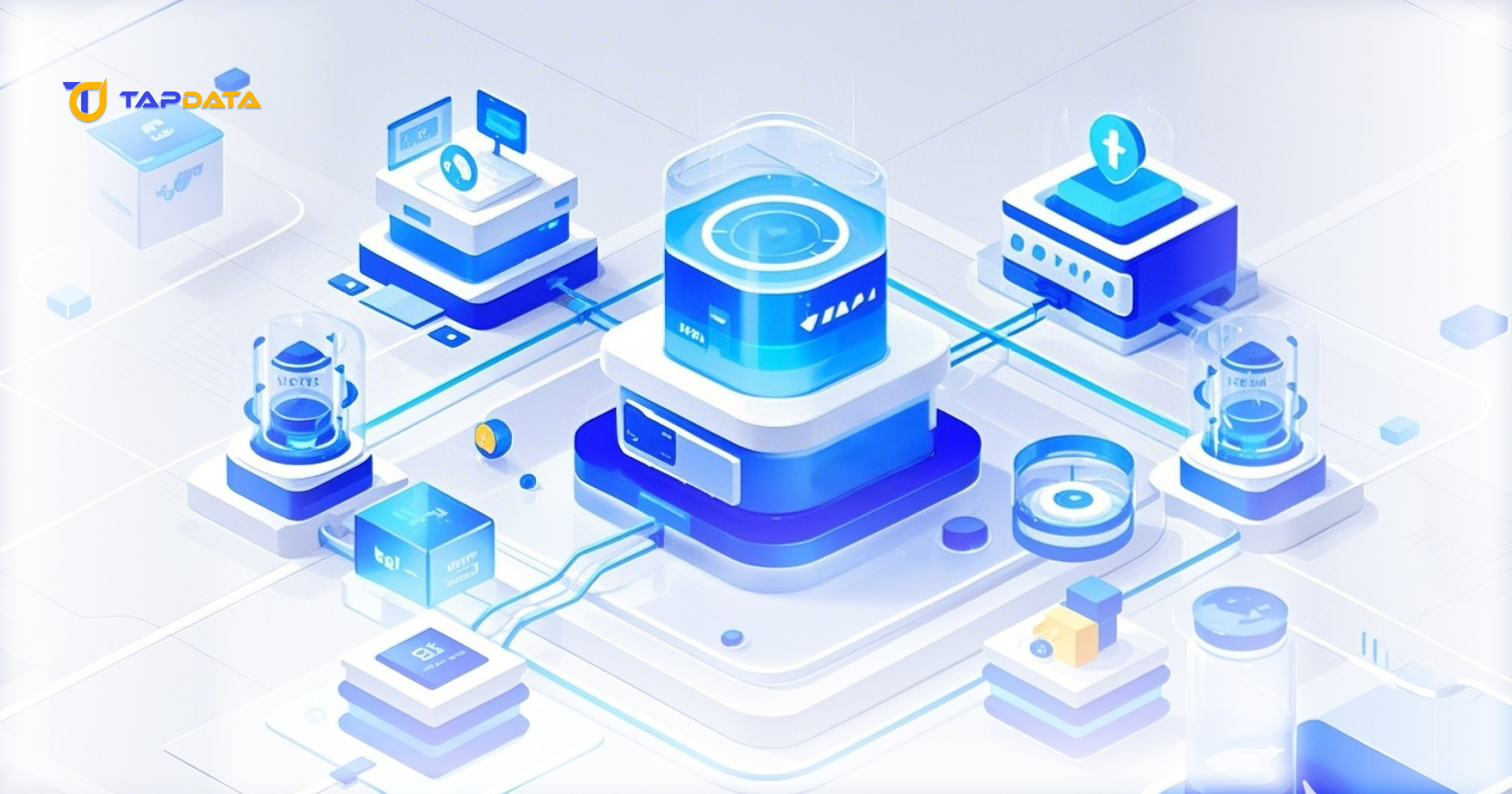
What Is an Enterprise Data Platform and Why It Matters
An enterprise data platform functions as a central hub for managing an organization's data ecosystem, integrating various data sources to enable businesses to harness the power of their data assets. Understanding what is data platform is crucial for effective data management, which is essential for companies aiming to gain a competitive edge. By centralizing and standardizing data functions, organizations can generate valuable insights and drive business success. The rise in investments in data solutions underscores the growing importance of these platforms. In particular, an enterprise data platform for banking and finance can significantly enhance decision-making and operational efficiency. Understanding Enterprise...
Oct 17, 2024

TapData Cloud 3.14.0 Release Notes
New Features Doris, ClickHouse, KingBaseES-R6, PostgreSQL, SQL Server, and MongoDB have passed the T...
Oct 10, 2024

Revolutionizing the Travel Industry: How ETL and Data Integration Drive Efficiency and Personalization
The travel industry ETL process is crucial for handling large volumes of data effectively. Efficient extraction, transformation, and loading of data are essential for smooth operations. Modern cloud solutions have revolutionized traditional methods, boosting travel industry data integration tool capabilities. The travel industry ETL tool plays a significant role in enhancing efficiency and customer experience. Emerging trends such as real-time data processing and AI-driven analytics are transforming business operations. These advancements lead to better decision-making and personalized customer experiences. The travel industry data integration tool is vital for staying competitive and meeting customer demands. The Role of ETL in the...
Sep 27, 2024

Discover the Best ETL Tools of 2024 for Seamless Integration
ETL tools are essential for data integration, efficiently handling the extraction, transformation, and loading of data. In 2024, the best ETL tools ensure seamless integration across various platforms. The market for ETL tools is expanding rapidly, with an anticipated value of $7,600 million by 2031. Choosing the right ETL tools enhances data management capabilities and addresses complex data needs. Open source ETL tools, such as TapData, provide flexibility and innovation. Selecting the top ETL tools can significantly impact your organization's data strategy. Understanding ETL and Its Significance What is ETL? Definition and components of ETL ETL stands for Extract, Transform,...
Sep 27, 2024
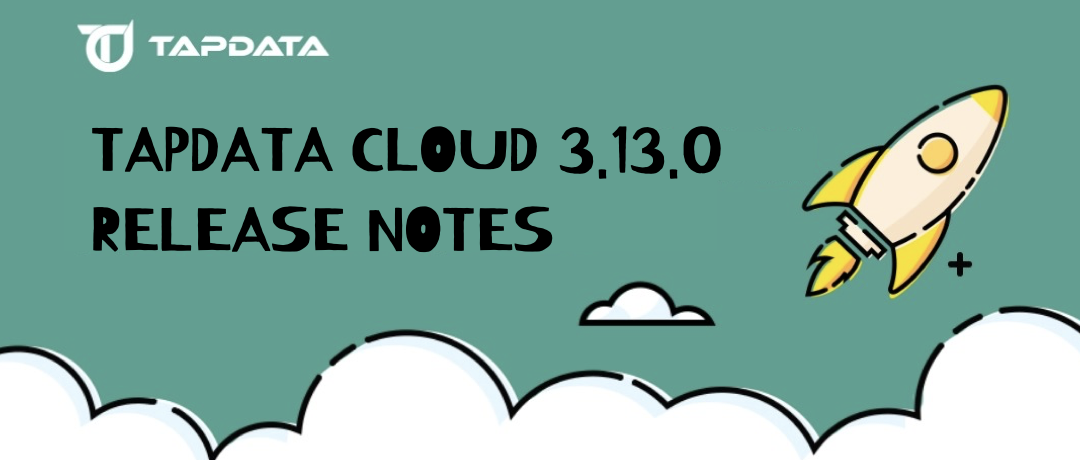
TapData Cloud 3.13.0 Release Notes
New Features MySQL has passed the TapData certification testing process, upgrading it to a certified data source, providing more comprehensive features and enhanced production stability. Added a form-based mode for building replication tasks, simplifying the task creation process and improving operational convenience. Enhancements Added a new sorting feature for mining tasks based on today's mined volume, making task management and filtering more convenient. Bug Fixes Fixed an issue where regular indexes were not properly synchronized after enabling the Sync Indexes on Table Creation option, ensuring data synchronization integrity. Try the Latest Version of TapData Cloud Now Explore new features and...
Sep 20, 2024

How to Set Up CDC Pipelines with Debezium
Change Data Capture (CDC) is essential in contemporary data architectures. CDC pipelines facilitate real-time data integration, empowering organizations to manage and synchronize growing data volumes efficiently. Debezium CDC stands out in capturing and streaming database changes in real time. This tool supports a range of relational databases, including SQL Server, MySQL, and PostgreSQL. The blog post aims to guide you through setting up CDC pipelines with Debezium CDC, enhancing your ability to implement real-time data processing and synchronization. Additionally, it will explore the differences between Debezium CDC and TapData CDC, providing insights into their respective strengths and applications. Prerequisites and...
Sep 13, 2024

How Data Integration Improves Efficiency and Guest Experience in the Hospitality Industry
Data integration revolutionizes business operations by merging data from multiple sources into a cohesive view. In today's world, industries, particularly the hospitality industry, rely heavily on ETL (Extract, Transform, Load) processes to boost efficiency and enhance decision-making. The hospitality industry faces distinct challenges in data management, as hotels and resorts often grapple with integrating diverse data sets, which can lead to project setbacks. A robust hospitality industry data integration tool is crucial for streamlining operations and enhancing guest experiences. Many companies invest in such integrations to improve retention rates. Data integration is indispensable for maintaining a competitive edge in the...
Sep 13, 2024
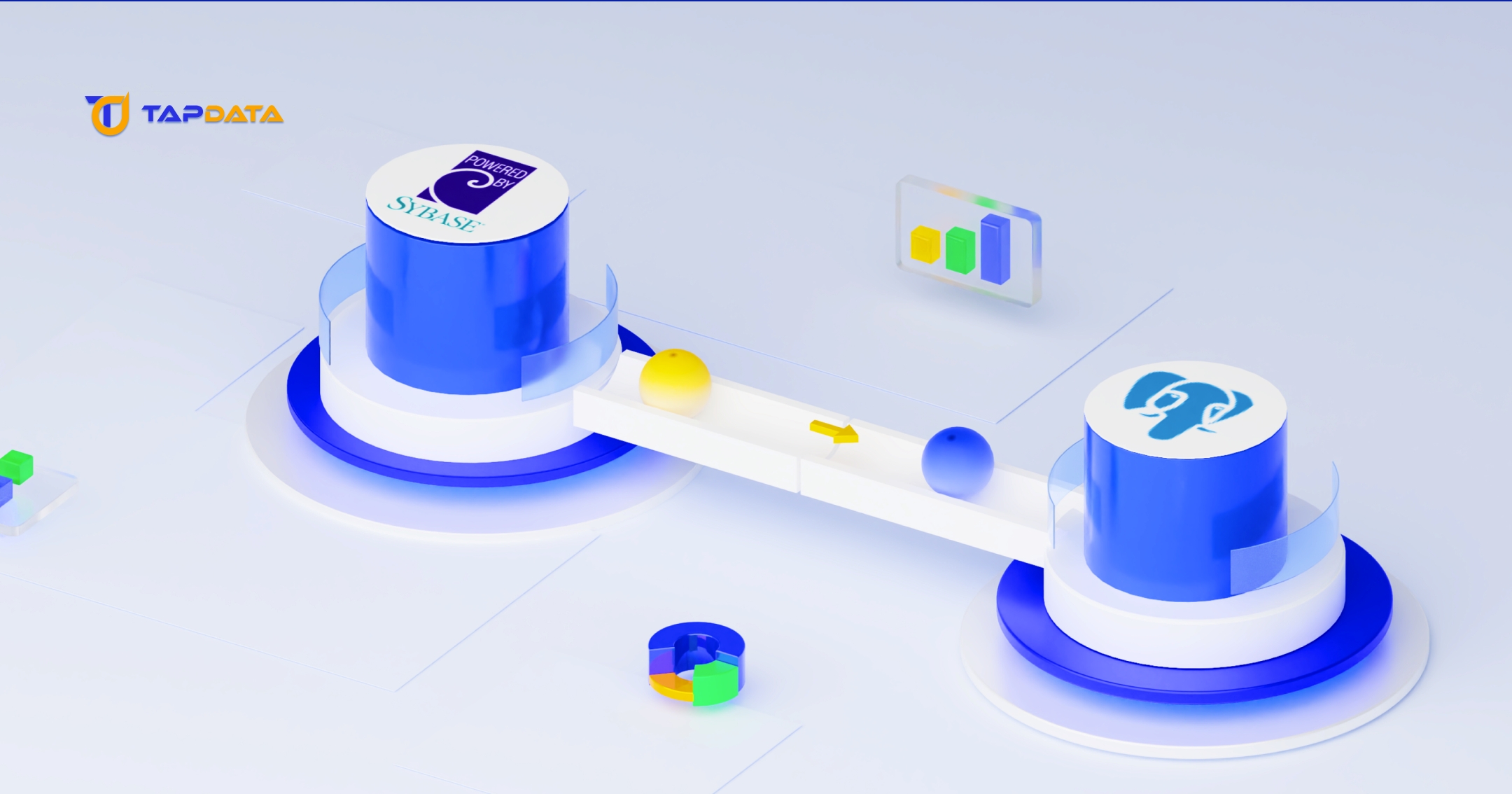
Seamlessly Transitioning from Sybase to PostgreSQL: A Comprehensive Guide for Modern Database Migration
Migrating databases is essential for modernizing IT infrastructure. Many organizations encounter cha...
Sep 05, 2024

Transforming Education with ETL: Unlocking Data-Driven Success for Modern Institutions
In the education industry, the demand for data integration is rapidly increasing. Schools and univer...
Sep 05, 2024

Transforming Public Sector Efficiency: The Power of ETL and Data Integration with TapData
Data is vital in the public sector, and the use of public sector ETL tools and public sector data integration processes significantly enhances data accessibility and operational efficiency. These public sector ETL processes consolidate data into centralized systems, thereby improving data quality and ensuring regulatory compliance. Research by McKinsey indicates that data-driven decision-making can lead to efficiency gains of 15-20% in government performance. Deloitte's study shows that 43% of public sector organizations have implemented automation in analytics to boost efficiencies. The potential impact on public sector innovation is substantial, unlocking new opportunities for growth and improvement. Understanding ETL and Data...
Aug 29, 2024

Seamless Migration from Elasticsearch to ClickHouse
Elasticsearch and ClickHouse are robust solutions for data management. While Elasticsearch is renowned for its full-text search and analytics capabilities, the ClickHouse database stands out for its rapid query processing and storage efficiency. Many businesses choose to migrate from Elasticsearch to ClickHouse to boost performance and cut costs. This migration can result in a 50% reduction in storage space and accommodate a 4x increase in data volume. The shift from Elasticsearch to ClickHouse replication facilitates around 15 million queries daily, highlighting substantial scalability enhancements. Understanding the Need for Migration Limitations of Elasticsearch Performance issues Elasticsearch often struggles with performance when...
Aug 29, 2024

TapData Cloud 3.12.0 Release Notes
New Features Oracle, Kafka, and Db2 have completed the TapData certification testing process, upgraded to GA-level data sources, offering enhanced capabilities and production stability. Added traffic billing view and payment features in the cloud version. Enhancements Optimized the layout structure of the menu entries. Improved error messages and risk warnings for high-risk operations. Significantly improved data synchronization performance. Optimized memory allocation logic during Agent startup. Bug Fixes Fixed the issue where some monitoring metrics were lost after task completion. Fixed potential runtime issues in PostgreSQL data source mining tasks. Fixed the issue where large-scale Agents on low-configuration servers might fail...
Aug 21, 2024

Revolutionizing Business with Real-Time Data Streaming: Unleash Instant Insights and Drive Proactive Action
Real-time data streaming revolutionizes business operations by facilitating immediate data processing and analysis. In today's digital landscape, the demand for rapid information access propels the adoption of real-time streaming data solutions. Industries like financial services and entertainment utilize streaming real-time data to boost decision-making and operational efficiency. Data streaming tools equip organizations with the ability to gain instant insights, fostering proactive responses and improved customer experiences. The global market for real-time streaming data analytics is expected to grow significantly, underscoring the rising importance of this technology. What is Real-Time Data Streaming? Definition and Key Concepts Real-time data streaming refers to...
Aug 21, 2024

Why Data Integration is Essential for the Modern Transportation Industry
Data integration is the backbone of the contemporary transportation industry, enabling seamless information flow across various platforms to boost operational efficiency and strategic decision-making. The transportation industry ETL (Extract, Transform, Load) processes are pivotal in facilitating this integration, ensuring data consistency and accessibility. A powerful transportation industry data integration tool serves as a catalyst for real-time insights and enhancements in customer service. By integrating diverse data sources, logistics enterprises are empowered to reach new heights in service quality and operational excellence. Understanding Data Integration in the Transportation Industry Definition and Key Concepts What is Data Integration? Data integration involves combining...
Aug 21, 2024

How to Master Data Preparation for Better Analytics
Data preparation plays a crucial role in analytics. Without proper data preparation, analytics can become unreliable and misleading. Data scientists spend up to 80% of their time on preparing the data, highlighting its significance. Mastering what is data preparation ensures higher data quality, leading to more accurate and actionable insights. Effective data preparation reduces errors, inconsistencies, and duplications, which enhances the reliability of analyses. By focusing on ETL data management and data preparation, organizations can achieve faster time-to-insight and better decision-making. Understanding Data Preparation What is Data Preparation? Definition and Scope Data preparation involves gathering, combining, structuring, and organizing data...
Aug 14, 2024

Why Energy Companies Need Advanced ETL Tools Now
Data plays a crucial role in the energy sector. The industry has seen a 60 percent growth in global primary energy production since the beginning of the century. However, managing this data presents significant challenges. Rapid increases in energy consumption and investments in energy transition technologies, which totaled $1.8 trillion in 2023, highlight the need for efficient data management. Traditional methods struggle to keep up with these demands. Advanced energy industry ETL tools have evolved to meet these challenges by streamlining data integration and improving data quality. These energy industry data integration tools are now essential for the energy industry....
Aug 14, 2024

TapData Cloud 3.11.0 Release Notes
New Features Enhanced Data Transformation Task Configuration to support reloading of single table models in the source node model preview area, improving loading efficiency. Introduced time detection functionality that automatically detects the time difference between the engine deployment server and the database server and displays it on the task monitoring page. Optimizations User-defined field business descriptions can now be directly displayed in the column name position of the table sample data. Bug Fixes Fixed an issue where some table data counts in the real-time data platform were empty. Fixed an issue where the host was not displayed in the path...
Aug 06, 2024

How to Choose the Right ETL Tool for Streaming Services
ETL tools play a crucial role in the streaming service industry. These streaming service industry ETL tools streamline data extraction, transformation, and loading processes, enabling real-time analytics. A Harvard Business Review survey found that 60 percent of businesses consider real-time customer interactions extremely important. Streaming service industry data integration tools reduce latency and provide immediate data availability, essential for live data analysis in online gaming platforms. The goal is to guide readers in selecting the right streaming service industry ETL tool for their needs. Understanding ETL Tools What is ETL? Definition and components ETL stands for Extract, Transform, Load. These...
Aug 05, 2024

Step-by-Step Guide to Planning Your Data Migration
Data migration plays a crucial role in modern business operations. Companies often need to migrate the data to new systems for better performance and scalability. But what is data migration? It involves several key considerations. First, identify the data format, location, and sensitivity. Next, plan the size and scope of the data migration project. Backup all data before starting the data moving process to prevent loss. Assess the required staff and tools for effective resource allocation. Execute the migration systematically and test the final system thoroughly. Follow-up and maintenance ensure ongoing data quality. Understanding Data Migration What is Data Migration?...
Aug 05, 2024

Top Best Practices for Oracle CDC Implementation
Oracle Change Data Capture (CDC) captures and delivers only incremental changes to optimize resource...
Jul 31, 2024

Why Advertisers Should Care About ETL Tools
Data plays a crucial role in the advertising industry. Advertisers rely on data to understand custom...
Jul 22, 2024

TapData Cloud 3.10.0 Release Notes
New Features Added a Union Node to data replication tasks, enabling the merging (UNION) of multiple tables within the same database. This is useful for data integration and analysis scenarios. Doris data source now supports certificate-free HTTPS connections. MySQL, Oracle, OpenGauss, SQL Server, and PostgreSQL data sources now support enabling the Hash Sharding feature in the advanced settings of nodes during task configuration, significantly improving the full data sync speed for large tables. Added support for VastBase data source, with a maturity level of Beta, further enriching the variety of data sources. Enhancements Improved synchronization logic for time zone fields....
Jul 20, 2024

Improving Telecom Billing Efficiency with ETL Tools: Practical Solutions and Benefits
Billing efficiency holds paramount importance in the telecom industry etl. Accurate and timely billing ensures revenue integrity and customer satisfaction. Telecom industry etl tools play a crucial role in enhancing this efficiency. These tools streamline data extraction, transformation, and loading processes. A well-architected telecom industry etl tool can reduce daily billing time from 8 hours to just 14 minutes, handling 30 million records efficiently. This blog will delve into how telecom industry etl tool introduction revolutionizes billing operations in the telecom indust. Identifying Challenges in Telecom Billing Common Issues in Telecom Billing Data Inconsistencies Telecom billing systems often face data...
Jul 18, 2024

Top Tips for Seamless Data Migration
Data migration plays a crucial role in modern businesses. The movement of data from one system to another ensures operational efficiency and supports business growth. However, many organizations face significant challenges during this process. Common issues include data loss, downtime, and budget overruns. Statistics reveal that *83% of all data migration projects fail* and more than 50% exceed their budget. A structured approach becomes essential to mitigate these risks. This blog promises practical tips to ensure a smooth data movement process. Understanding how to migrate data effectively and the best practices for migrating data can significantly reduce these challenges. Assessing...
Jul 18, 2024

Why You Should Use Change Data Capture for Data Movement
Modern businesses rely heavily on the movement of data to drive operations and decision-making. Trad...
Jul 9, 2024

Boost Your Online Shopping Efficiency with ETL Tools: A Complete Guide
Efficiency holds paramount importance in the online shopping industry ETL. Retailers with efficient ...
Jul 9, 2024
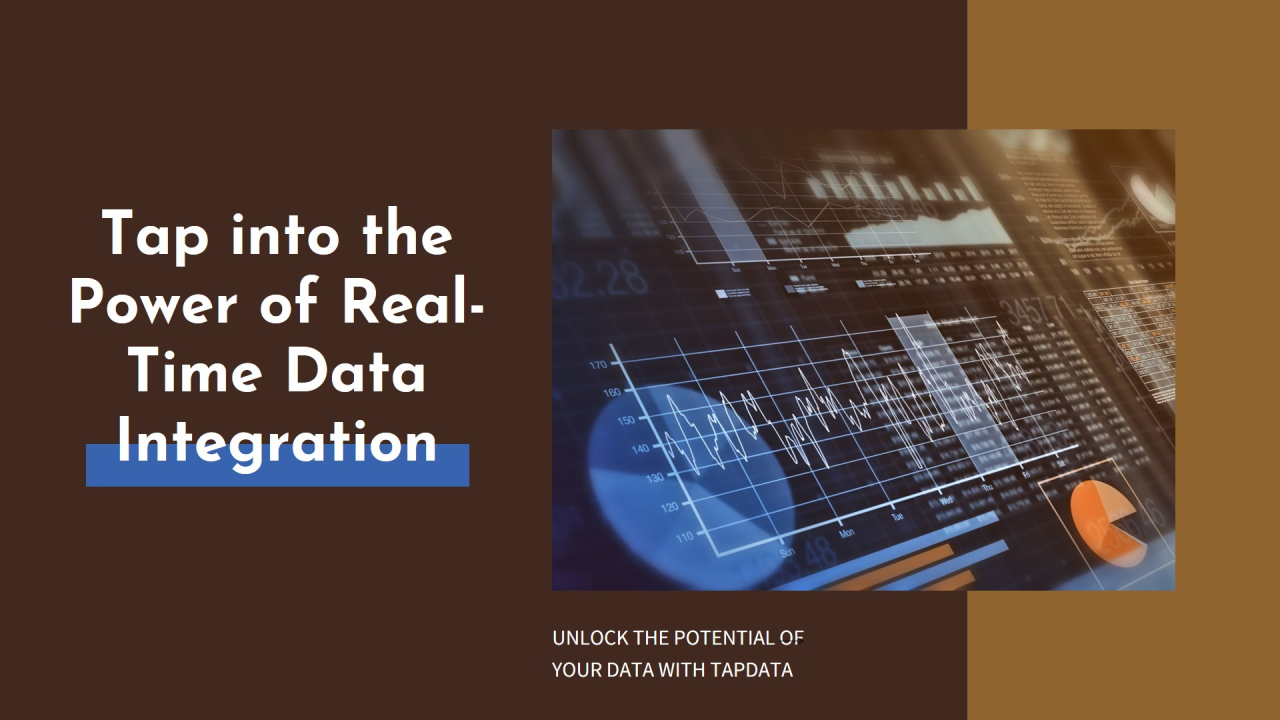
Unlock the Power of Real-Time Data Integration with TapData
Simplify Your Data Integration with TapData In a world where data is the backbone of business, the complexity of building and maintaining data pipelines can be overwhelming. TapData steps in to simplify this process, offering a lightweight alternative to tools like OGG and DSG. With our unique combination of CDC, stream processing, and data integration, TapData accelerates data flow within your warehouse, helping businesses turn valuable data into actionable insights and bring the concept of a “real-time data warehouse” to life. Constant Evolution for Enhanced User Experience At TapData, we are committed to continually enhancing our product capabilities and optimizing...
Jul 8, 2024

TapData Cloud 3.9.0 Release Notes
Enhancements Optimized features in the Real-Time Data Hub: The data processing layer now displays all models in the database. The platform cache layer and platform processing layer can be configured with different connections, which cannot be adjusted after setting. Added an API publishing entry. Improved the display of model details. Added field restriction configuration parameters for the ElasticSearch data source. Optimized exception handling logic when enabling the preimage capability for the MongoDB data source. Bug Fixes Fixed an issue where some task event statistics might occasionally be missing when reported. Fixed an issue where shared cache tasks without shared mining...
Jul 5, 2024
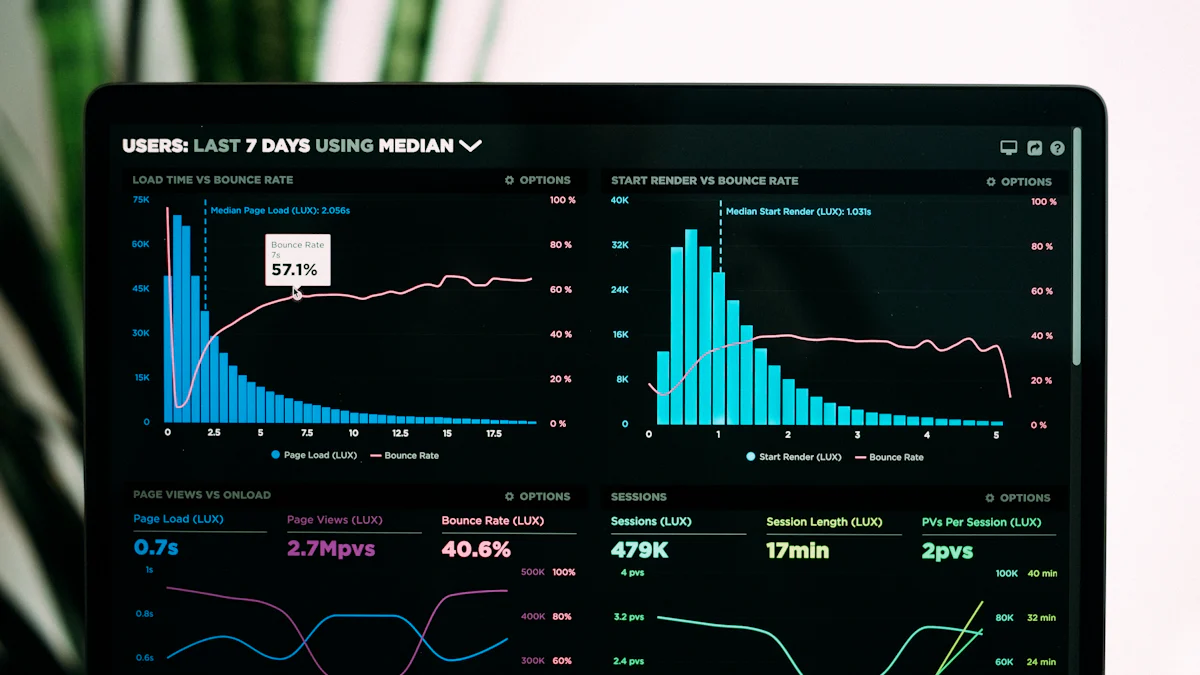
A Comprehensive Guide to ETL and Data Integration in Finance
In the realm of finance, finance industry ETL tools play a pivotal role in harnessing the power of d...
Jul 2, 2024

Best Practices for Change Data Capture: Kafka and Modern Data Stack Tools
Change Data Capture (CDC) is a pivotal concept in modern data architectures, revolutionizing the way...
Jul 2, 2024

Transforming Shipbuilding with Real-Time Data: A Case Study on Integrating TapData and Real-Time Data Warehousing
Faced with the challenges of intelligent manufacturing and the complexities of flexible production, traditional manufacturers are actively seeking new digital models to stay ahead. Beyond merely adopting advanced technologies like the Internet of Things (IoT) and Artificial Intelligence (AI) for efficient and intelligent production processes, manufacturers are also recognizing the crucial role of flexible production in adapting to ever-changing market demands and evolving environmental regulations. In this context, data becomes increasingly valuable. Companies are connecting various production lines to ensure real-time monitoring and data collection throughout the production process. This enables them to gain accurate insights into production conditions, optimize...
Jul 1, 2024
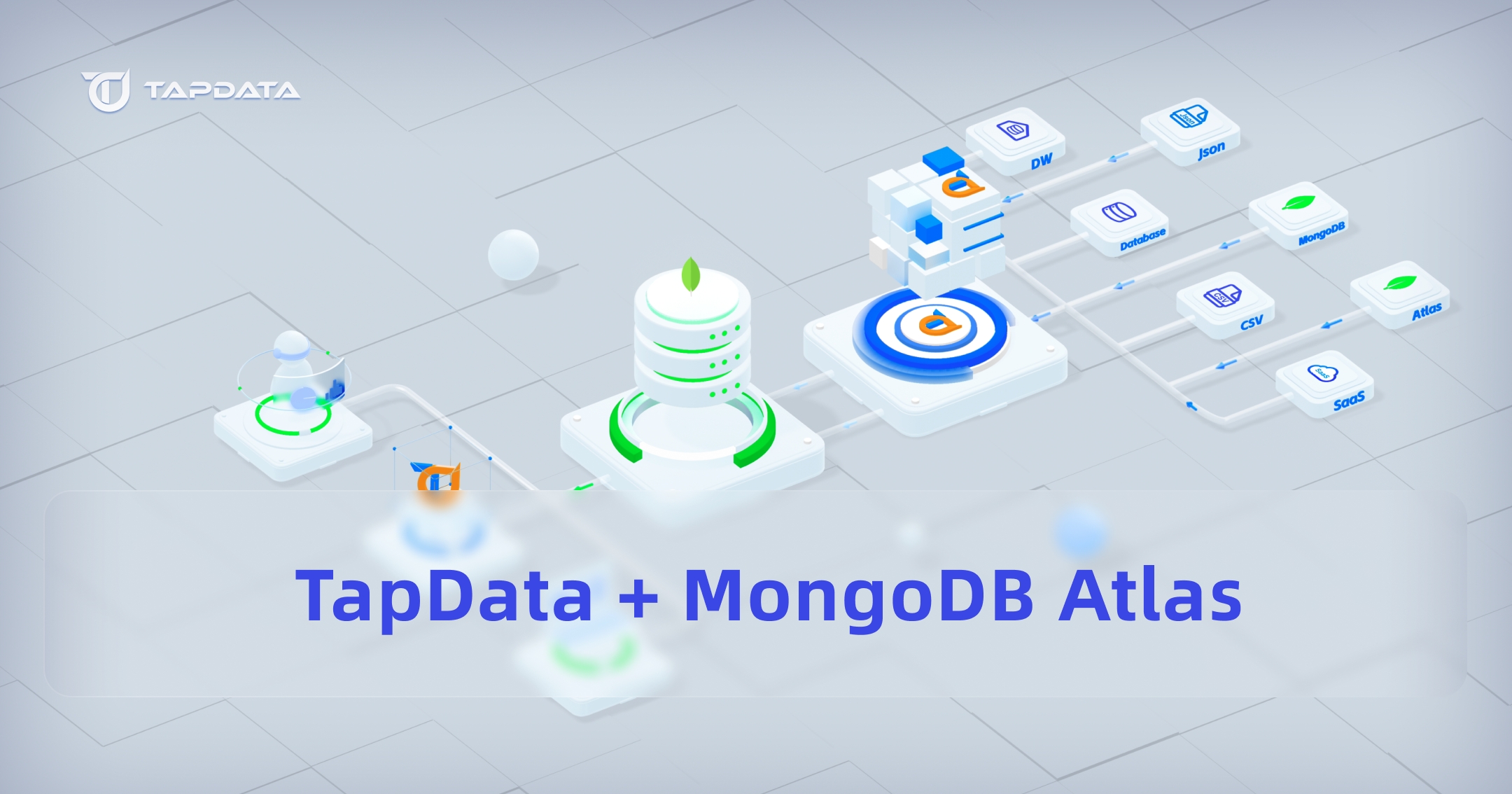
A LLM RAG example: Using TapData + MongoDB Atlas to Build AI Support Application with ease
V 2.0 In the ever-evolving landscape of customer support, managing support tickets efficiently can b...
June 27, 2024
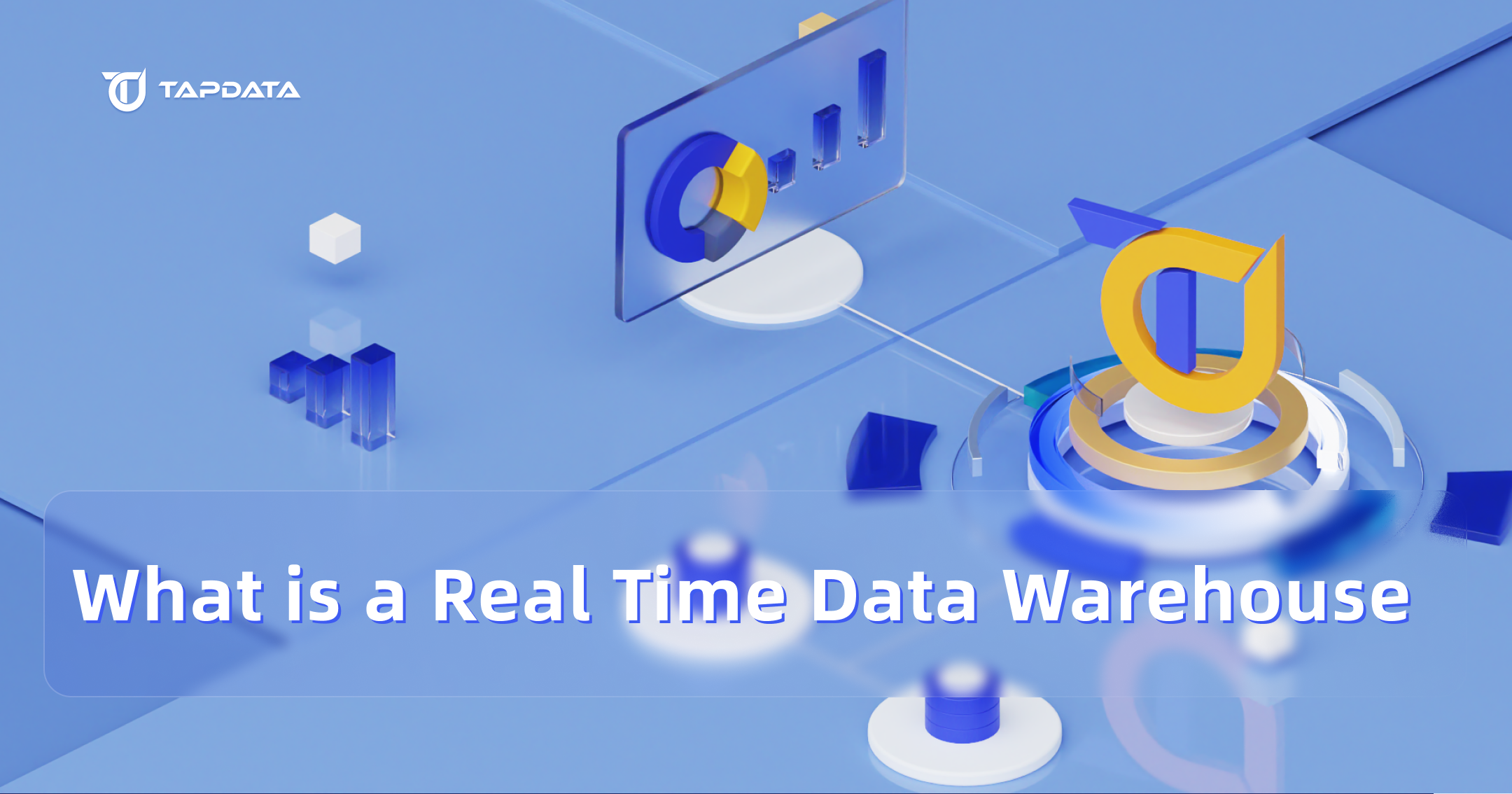
Maximizing Business Insights with Real Time Data Warehouse Solutions
In today's fast-paced business environment, leveraging real-time data warehouses has become es...
June 26, 2024

From Automation to AI: The Next Wave of ETL in Healthcare
The healthcare industry ETL thrives on data, utilizing it as the cornerstone of modern patient care....
June 26, 2024
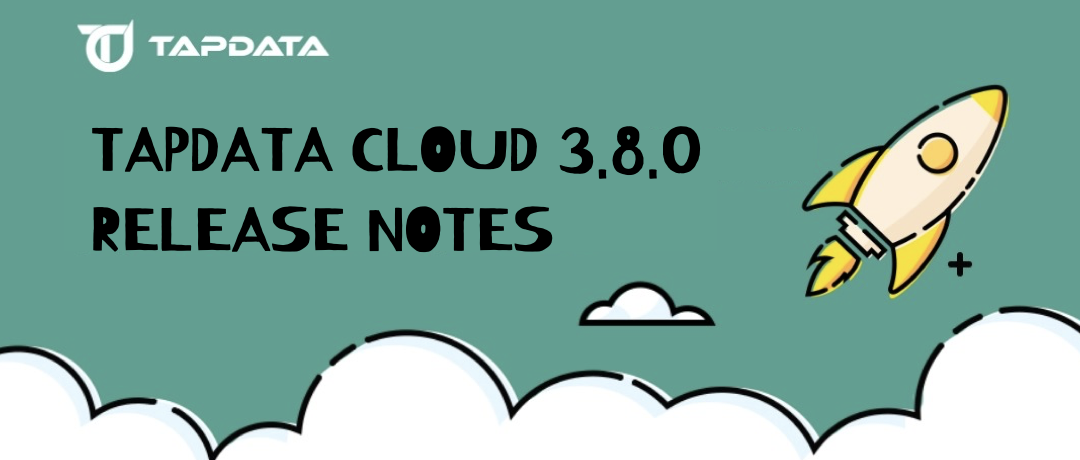
TapData Cloud 3.8.0 Release Notes
New features Enhanced TiDB data source capabilities, supporting real-time incremental synchronization Feature Enhancements Optimization of primary key and index display of task table model Model deduction logic optimization, supporting direct model deduction in the engine Bug Fixes Fixed the issue of ignoring some exceptions in data source exception handling Fixed the problem that the time field could not find the data when doing the aggregation task of the associated key. Fixed the issue where the delay time of mining tasks was always 0 Fixed the issue where large table initialization synchronization would occupy a large amount of database memory when...
June 20, 2024

Real-Time Cheat Detection in Gaming: The Future of Fair Play
Understanding Cheat Detection In the realm of gaming, maintaining fairness and integrity is paramount. Cheat detection in gaming serves as the bedrock for ensuring equitable gameplay and a positive user experience. Real-time data emerges as a pivotal tool in identifying and preventing cheating within the gaming sphere. Leveraging TapData‘s real-time data integration, player behavior analysis takes center stage in spearheading cheat detection and prevention measures. This proactive approach sets the stage for upholding fair play and fostering an enjoyable gaming environment for all participants. Role of Real-Time Data Importance of Real-Time Data in Cheat Detection Real-time data plays a pivotal...
June 20, 2024
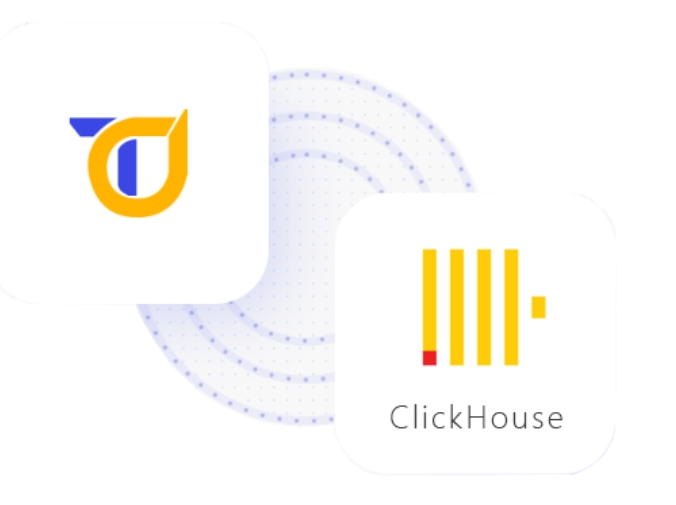
Sync Any Database to ClickHouse Instantly with TapData
Benefits of Syncing Databases with TapData Syncing databases to ClickHouse with TapData offers numerous benefits for data analysts, IT professionals, and tech enthusiasts. Firstly, it improves data accuracy and consistency. This is because TapData provides a seamless syncing process that ensures data is updated in real-time across all databases. With this feature, there is no need for manual data entry or updating, which can lead to errors and inconsistencies. Secondly, TapData enables real-time data syncing. This means that as soon as new data is added to a database, it is automatically synced across all connected databases. This eliminates the need...
June 20, 2024
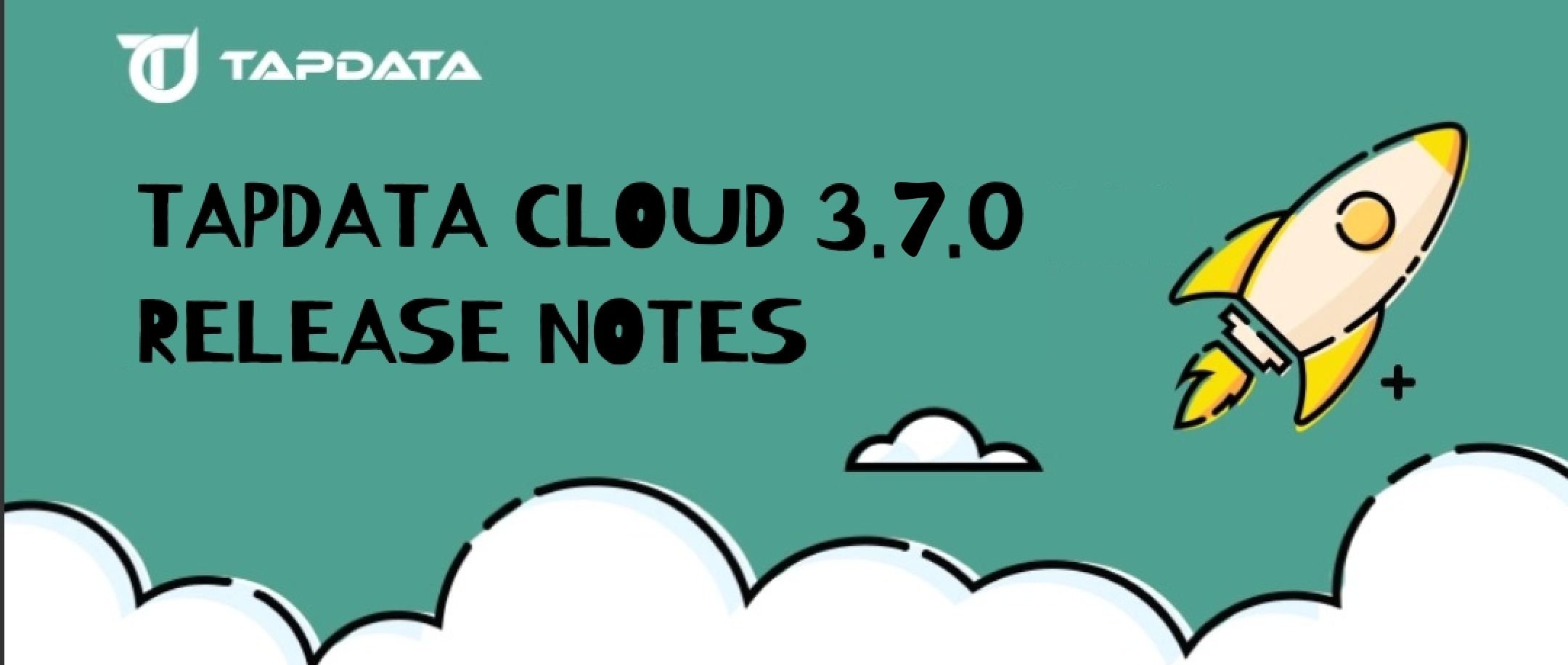
TapData Cloud 3.7.0 Release Notes
Feature Enhancements Skip error function optimization when starting tasks. Bug Fixes Fixed the problem that the task running model was inconsistent with the configuration model. Fixed the issue of inaccurate task event statistics after filtering data at the source end. Fixed the issue of time zone handling exceptions when synchronizing Oracle and PostgreSQL Fixed the problem that the connection list loading speed was too slow. Fixed the problem that the normal task could not be started when the heartbeat task reset failed.
June 4, 2024
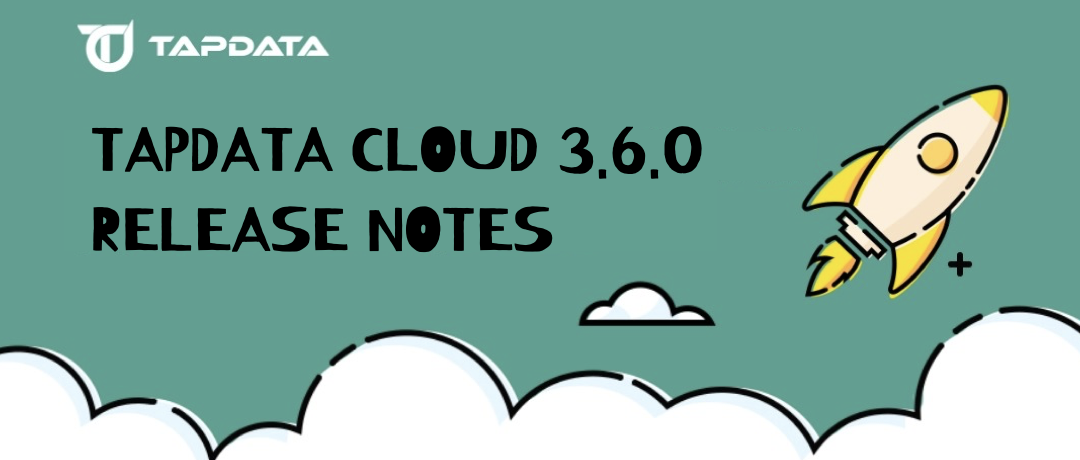
TapData Cloud 3.6.0 Release Notes
New Features Added support for dynamically generating date suffixes for target table names. Added support for using OceanBase database in Oracle mode as both source and target. Feature Enhancements Optimized data processing logic for MongoDB synchronization to SQL databases. Issue Fixes Fixed the issue where MariaDB couldn't write data in the format ‘0000-00-00 00:00:00' to the target. Fixed the issue where heartbeat tasks couldn't automatically recover after the heartbeat table was mistakenly deleted. Fixed the issue where shared mining tasks encountered errors and couldn't be serialized.
May 21, 2024
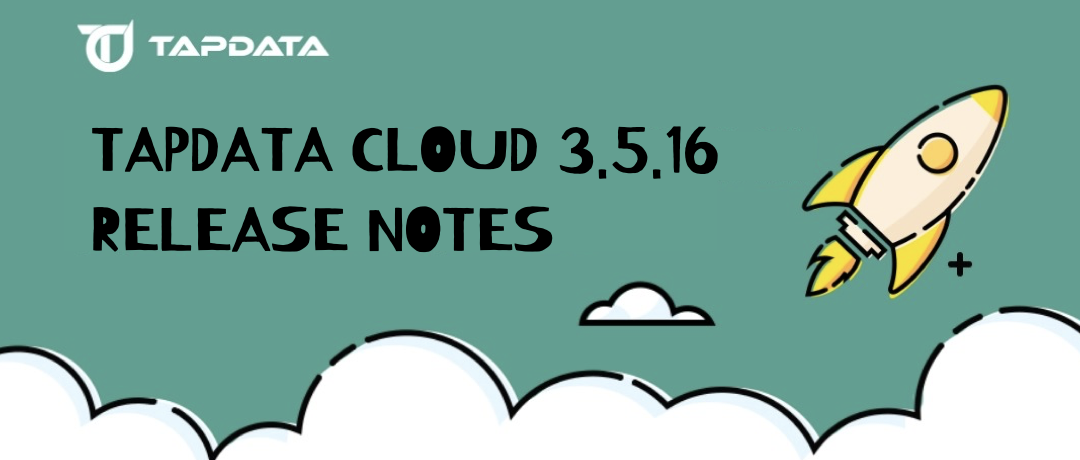
TapData Cloud 3.5.16 Release Notes
New Features Added support for bi-directional synchronization from MySQL to MySQL. Added support for...
May 9, 2024

Centerlized Customer Data Platform for A Top Casino Chain
1. Introduction In hospitality which is a fast-paced environment, a unified customer data platform w...
April 28, 2024
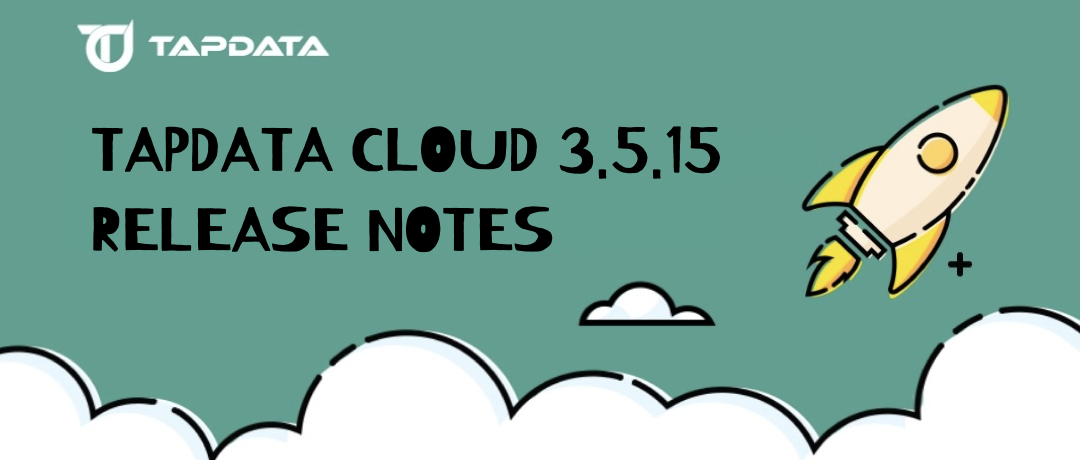
TapData Cloud 3.5.15 Release Notes
New Features: Added support for MySQL master-slave architecture, enabling synchronization tasks to s...
April 24, 2024
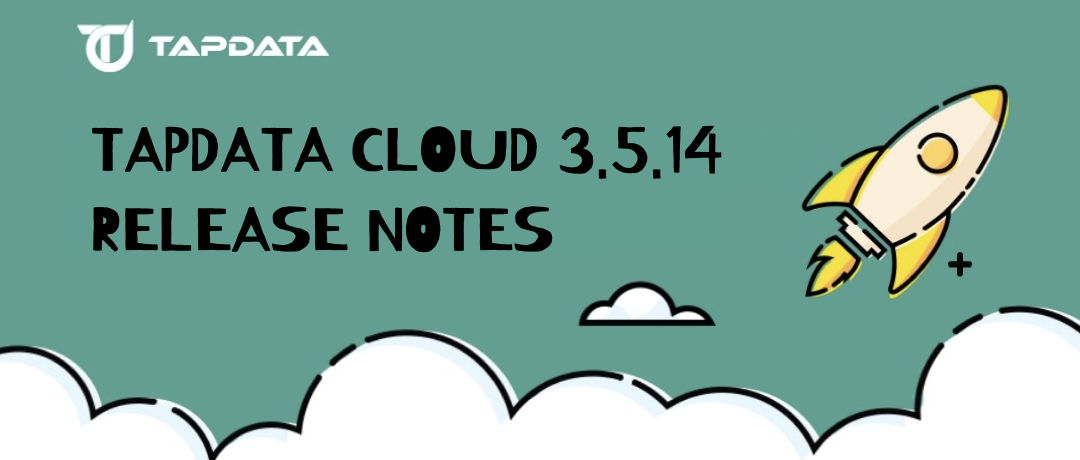
TapData Cloud 3.5.14 Release Notes
New Features: Added Oracle to MySQL full-stage index synchronization capability, synchronization of ...
April 19, 2024
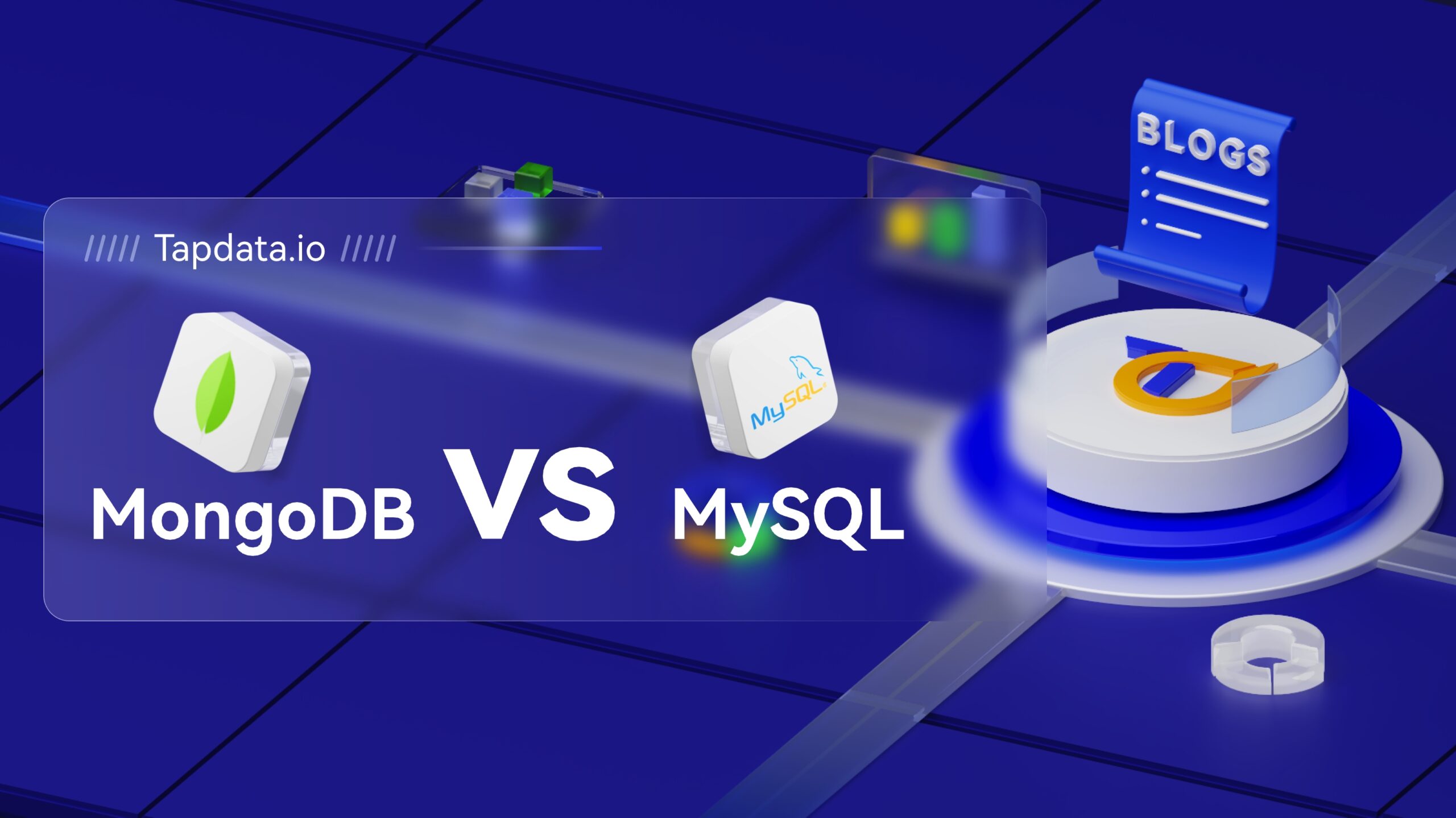
MongoDB vs MySQL: 9 Key Differences You Need to Know
Introduction to MongoDB and MySQL Understanding Databases In today's data-driven world, databa...
April 18, 2024
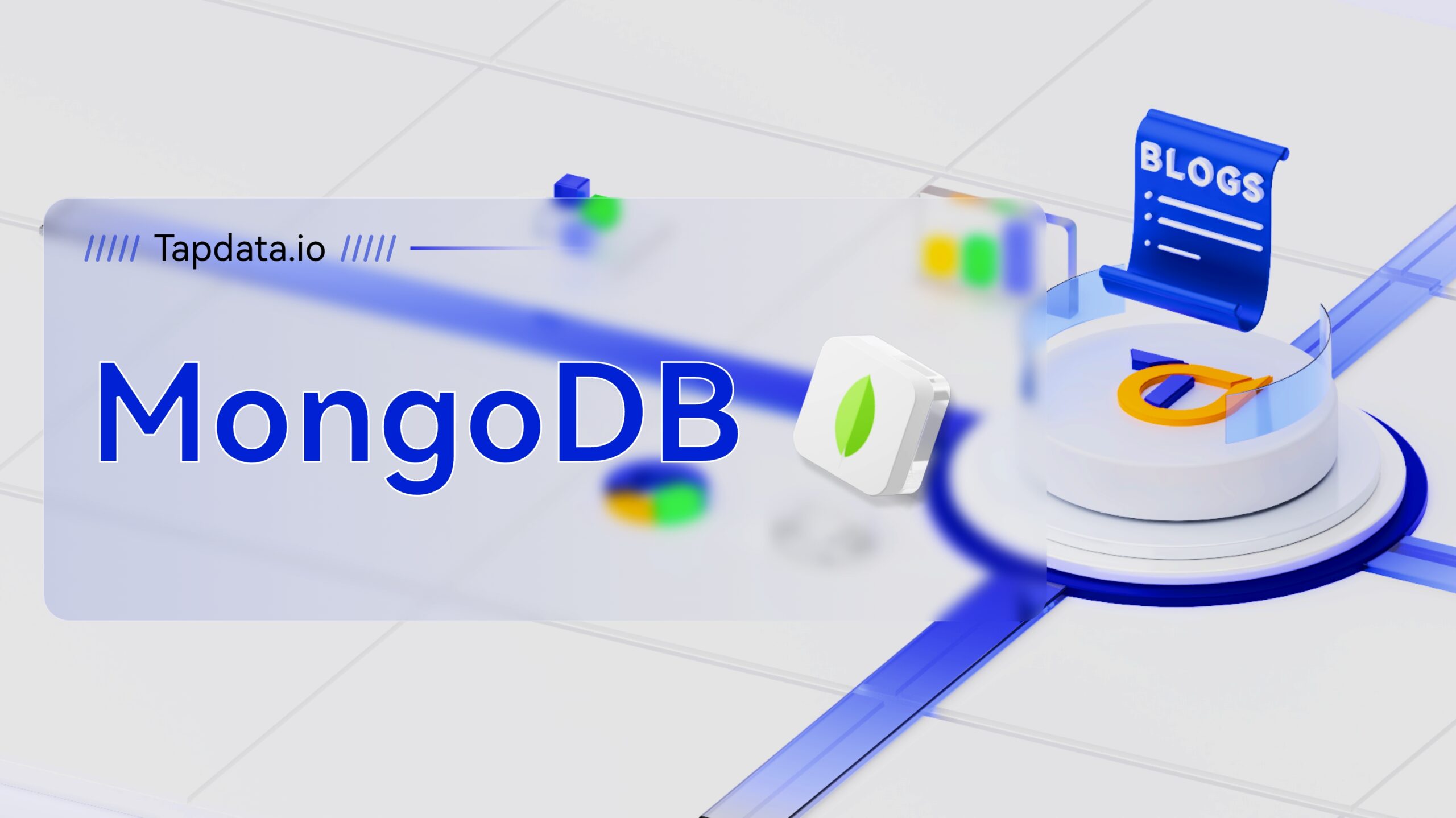
When to Use MongoDB: 3 Key Use Cases for Choosing MongoDB Over Other Databases
Introduction to MongoDB and Its Unique Advantages MongoDB, a leading NoSQL database, offers a range ...
April 17, 2024
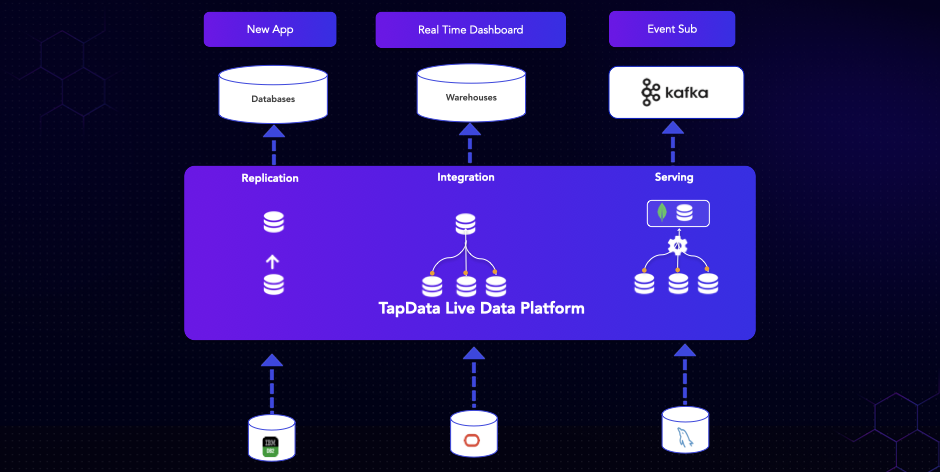
How to Achieve Continuous Data Sync from Oracle RDBMS to MongoDB/Atlas
Recently, TapData was selected as a partner by MongoDB and officially added to the MongoDB Ecosystem...
April 9, 2024
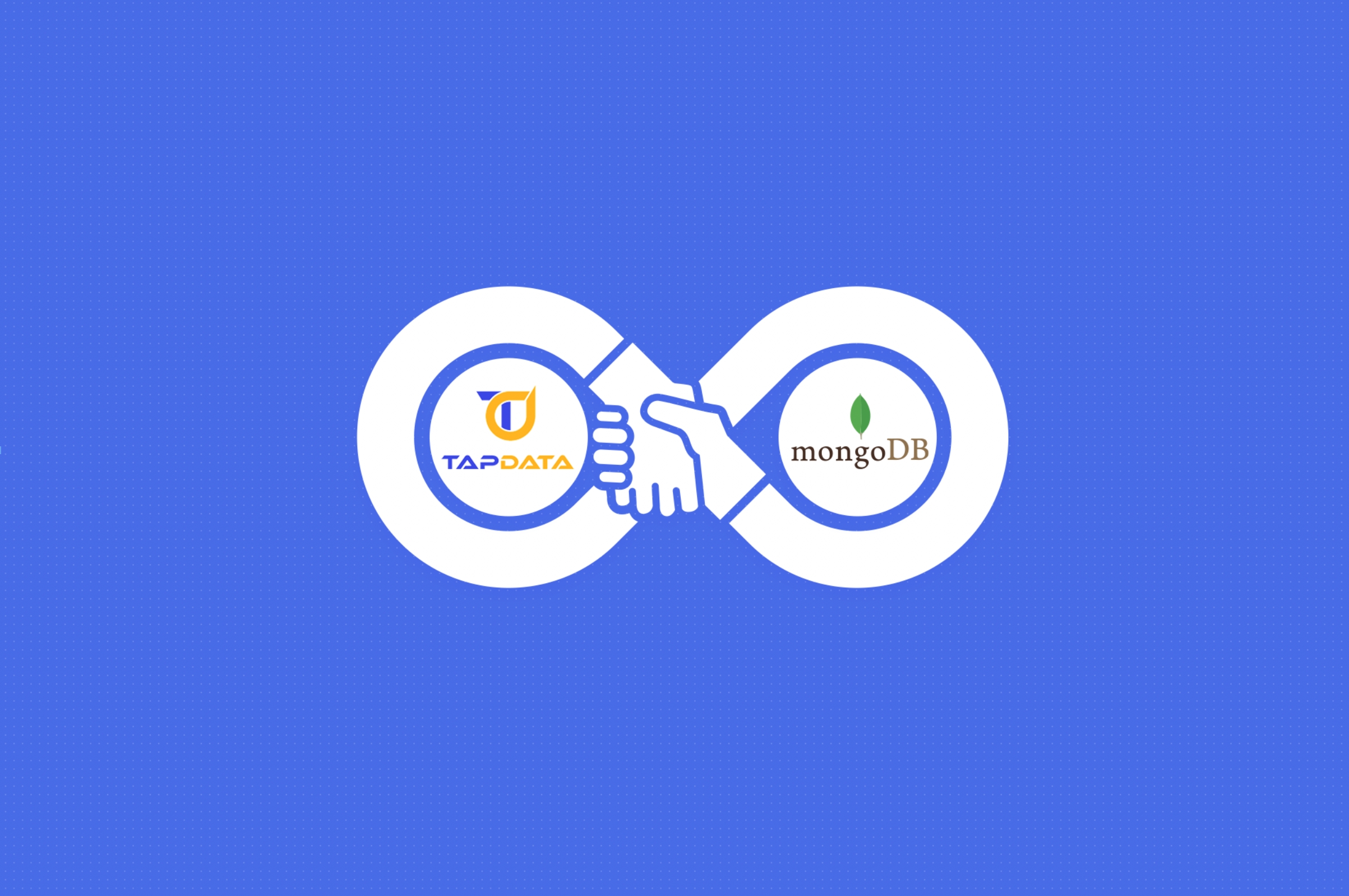
TapData Joins MongoDB Partner Ecosystem Catalog with Real-Time Data Integration Solutions
Recently, TapData has been added to the MongoDB Partner Ecosystem Catalog. This move is all about helping users find top-notch integrations and solutions from MongoDB partners. The selection of over 100 partners was made from a pool of thousands of collaborating enterprises. This partnership marks a significant milestone in our journey towards revolutionizing data integration for modern applications. At TapData, we specialize in real-time data synchronization from Relational Database Management Systems (RDBMS) to MongoDB, empowering businesses to seamlessly bridge the gap between traditional and modern data architectures. Our cutting-edge solution supports array, sub-document, and table joins, ensuring the integrity and...
April 7, 2024
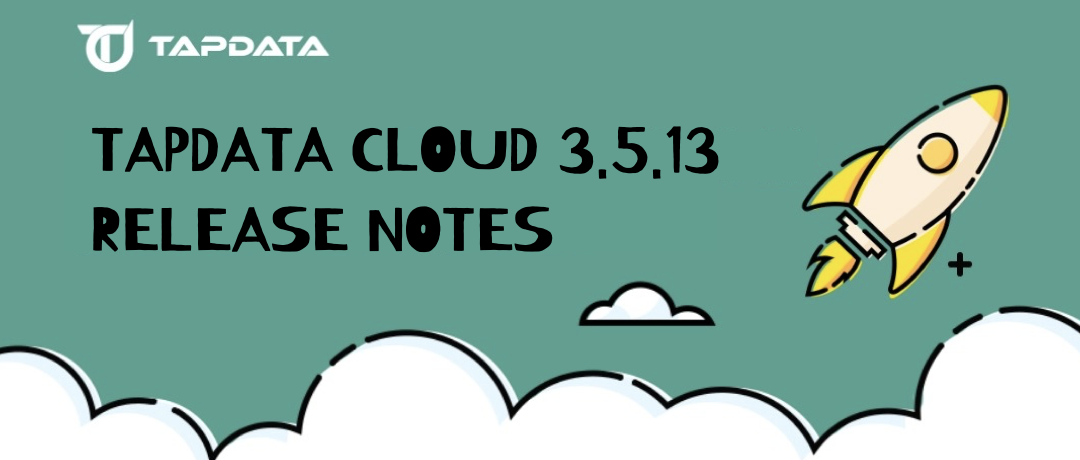
TapData Cloud 3.5.13 Release Notes
Issue Fixes: Addressed the issue where the unavailability of the cloud version TM caused engine exce...
March 28, 2024
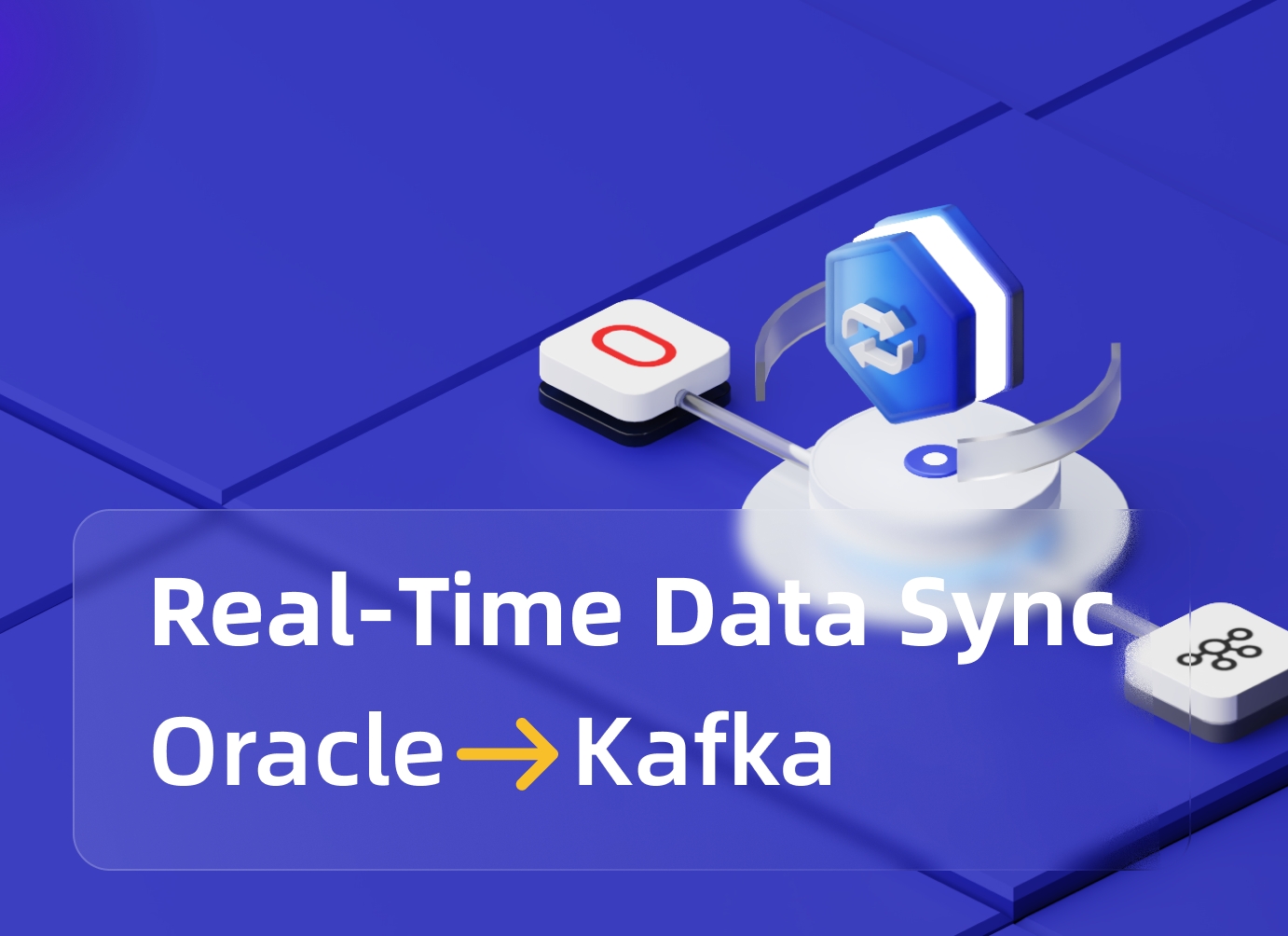
How to sync data from Oracle to Kafka in real time: Debezium, Oracle Golden Gate, and TapData
Amidst the thriving information age, the imperative for real-time data processing has emerged as a p...
March 28, 2024
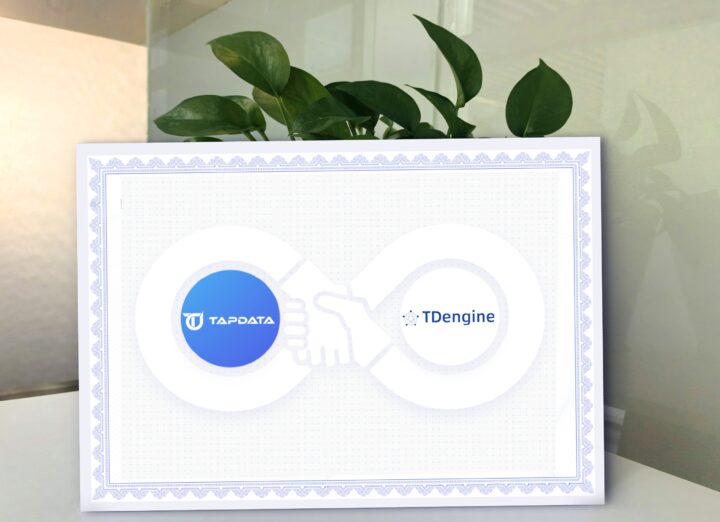
TapData Live Data Platform and TDengine Achieve Product Compatibility Certification, Pioneering a Real-Time IoT Data Ecosystem
Recently, TapData Live Data Platform and the TDengine Big Data Platform have attained product compat...
March 25, 2024
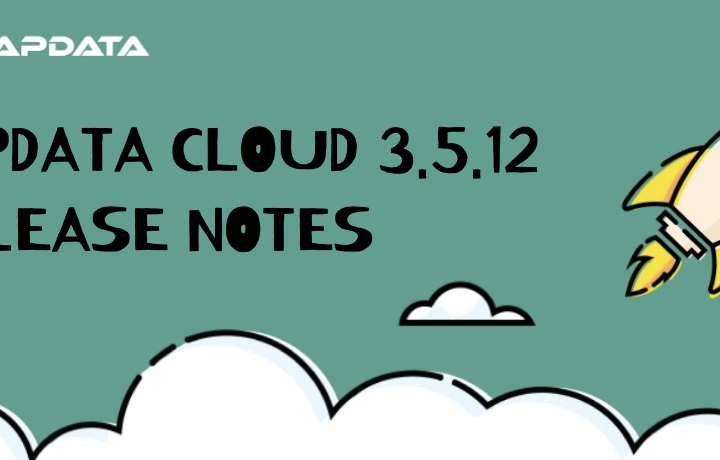
TapData Cloud 3.5.12 Release Notes
New Features ① Added default alert recipient settings for the cloud version, allowing configuration ...
March 18, 2024

TapData Welcomes Robin Losey as Chief Operating Officer
Recently, TapData announced the official appointment of Robin Losey, former Managing Director (IT) f...
March 14, 2024

Selecting the Best Bank ETL Tool for Data Migration in 2024
In the fast-paced world of banking, the efficient management and processing of vast amounts of data ...
March 14, 2024

Boosting Operational Efficiency: The Role of ETL Tools in the Airline Industry
What is an airline industry data integration tool, and why do airline companies need it? In the foll...
March 14, 2024
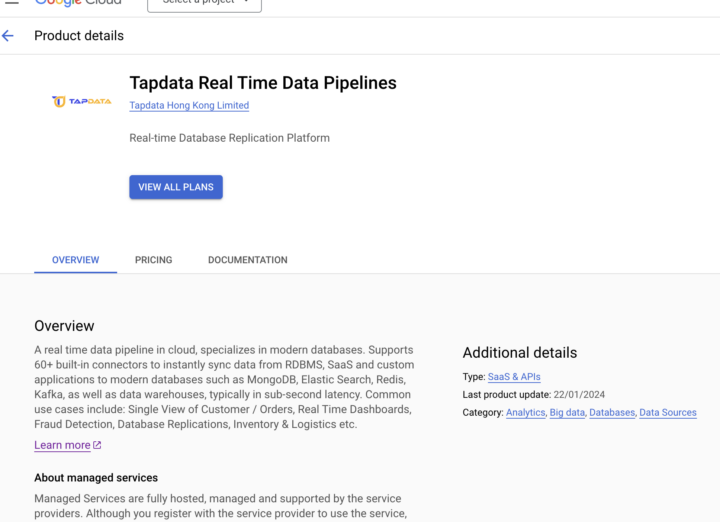
TapData Real Time Data Pipelines Now Available on Google Cloud Marketplace!
We are thrilled to announce that TapData Real Time Data Pipelines is now officially available on Google Cloud Marketplace, offering global enterprises efficient and reliable solutions for data synchronization and management. Real-time Data Synchronization for Instant Business Insights TapData Real Time Data Pipelines is a cloud service dedicated to real-time data synchronization, specializing in modern databases. With support for over 60 built-in connectors, we enable instant synchronization of data from various sources such as relational databases, SaaS, and custom applications to modern databases like MongoDB, Elastic Search, Redis, Kafka, and data warehouses, typically achieving sub-second latency. Common use cases include...
Feb 27, 2024

Exploring Database Replication Methods and Tool Comparison
Database replication methods vary, and relate to tool comparison for database replication. In the ever-evolving landscape of data management, understanding the concept of database replication is pivotal for enterprises seeking to optimize their operations. Database replication serves as a fundamental strategy to enhance data availability, ensure fault tolerance, and improve overall system performance. What is Database Replication and Why it Matters Database replication plays a crucial role in ensuring data availability and fault tolerance within an organization's infrastructure. As organizations grapple with increasing data volumes and the demand for real-time access, the significance of database replication becomes even more pronounced....
Feb 19, 2024

A Comprehensive Guide for the Best MongoDB ETL Tool Comparison and Selection
In search of a guide for the comparison and selection of the best MongoDB ETL Tool? In the dynamic landscape of data management, MongoDB stands out as a popular NoSQL database known for its flexibility and scalability. As organizations harness the power of MongoDB to store vast amounts of diverse and unstructured data, the need for effective ETL (Extract, Transform, Load) processes becomes paramount. ETL serves as the backbone for integrating, transforming, and loading data from various sources into MongoDB, ensuring that the database remains a valuable asset for decision-making. The success of ETL operations in MongoDB hinges on the...
Feb 19, 2024
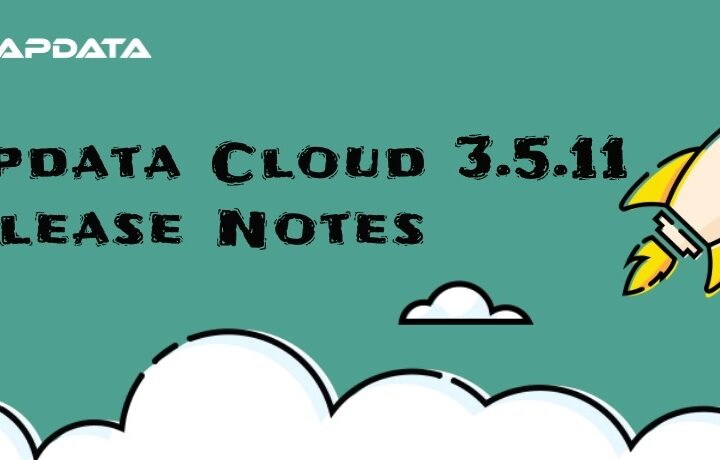
TapData Cloud 3.5.11 Release Notes
New Features ① Cloud version now supports the shared mining feature. ② Shared mining now supports th...
Feb 15, 2024
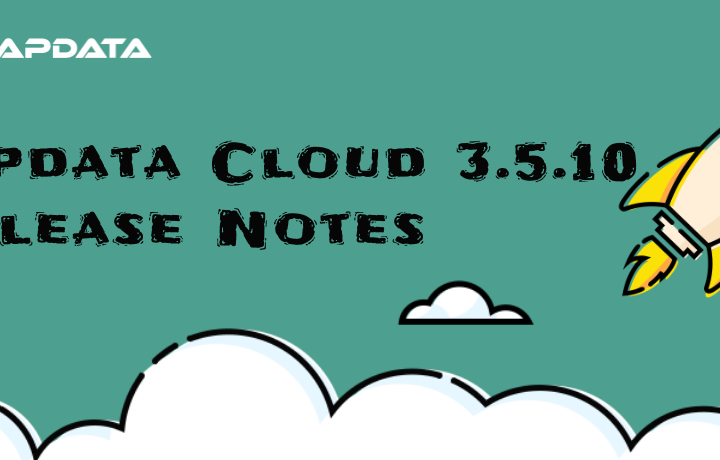
TapData Cloud 3.5.10 Release Notes
New Features ① MongoDB to MongoDB synchronization now supports the capped collection type. ② Added the capability to support the import of relmig files from MongoDB to generate tasks. Feature Enhancements ① Optimized the onboarding process for new users, now supporting collapsible steps and the ability to go back to the previous step. Issue Fixes ① Fixed an issue where setting JS node model declarations in the task editing page resulted in an error. ② Fixed an issue with Oracle to MySQL DDL, specifically related to the testing failure when dropping a column. ③ Resolved an issue with MySQL to...
Jan 23, 2024
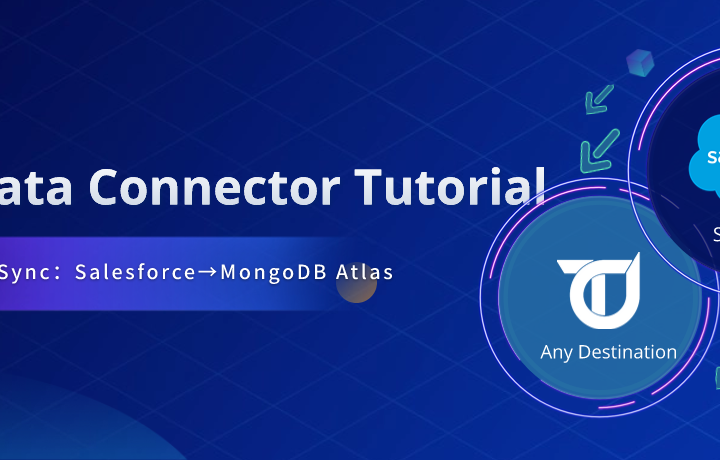
Effortless Salesforce to MongoDB Atlas Sync: Step-by-Step Guide
Streamlining Data Integration In today's fast-paced business environment, seamless data integration is crucial for efficient operations. When it comes to syncing data from Salesforce to MongoDB Atlas, businesses need a reliable and effortless solution. The process of Salesforce data integration with MongoDB Atlas involves ensuring that information flows smoothly between the two platforms without any hiccups. Effortlessly syncing data from Salesforce to MongoDB Atlas allows organizations to streamline their operations and make informed decisions based on real-time, synchronized data. This ensures that all teams are working with the most up-to-date information, leading to improved productivity and better decision-making. Salesforce to MongoDB Atlas sync: Simplifying the process...
Jan 08, 2024

Sybase Integration with Database Replication Tool: Seamless Migration in 2024
Navigating the Digital Transformation Landscape in 2024 In 2024, digital transformation continues to be a pivotal focus for organizations, with the transition from legacy technologies to modern platforms being a key driver. The impending end-of-life of SAP ASE in 2025 has significant implications for businesses, prompting them to reevaluate their database management strategies. As highlighted by TJ, Founder and CEO of TapData, many companies are looking to migrate their data onto contemporary platforms such as MongoDB, SQL Server, PostgreSQL and others. This shift underscores the critical need for seamless migration strategies to mitigate increased support costs and navigate platform migration...
Jan 07, 2024
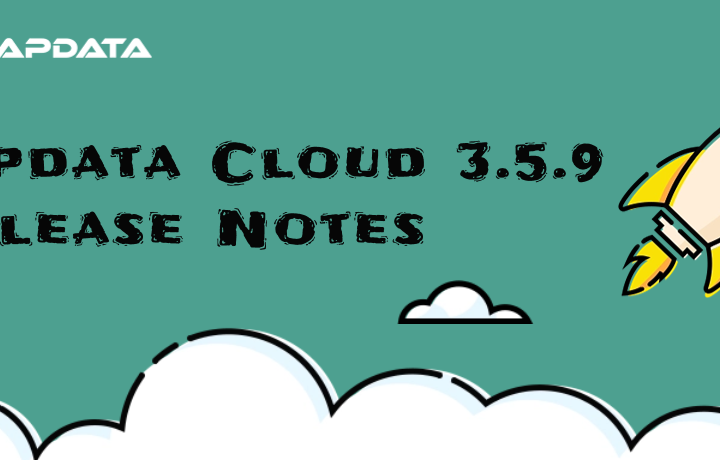
TapData Cloud 3.5.9 Release Notes
New Features ① Added support for timeseries collection type for MongoDB version 5.+. ② Added support for preImage for MongoDB version 6.+. Feature Enhancements ① Optimized the reminder for scheduled tasks when the task count reaches the upper limit. Issue Fixes ① Fixed the issue of inaccurate breakpoints in multi-table data replication. ② Fixed the problem where an Agent, which has been unsubscribed and deleted, continues to report heartbeats. ③ Fixed some UI/UX issues.
Dec 27, 2023

The Power of Low-Code Integration Tools & Platforms
In the bustling business landscape today, the quest for efficiency has led industries to explore innovative solutions for seamless system integration. For enterprises, low-code integration tools and platforms have emerged as a transformative force, providing a faster, cost-effective, and user-friendly approach to data connectivity and workflow optimization. Understanding Low-Code Integration Platforms Low-code integration refers to a development approach that enables users to create applications and integrations with minimal coding knowledge. Low-code integration tools simplifies the development process by providing a visual interface where users can drag and drop pre-built components to build workflows and automate processes. Low-code integration platforms serve...
Dec 24, 2023

ETL Tool Comparison: Selecting the Ideal Solution for Businesses
In the ever-evolving landscape of data management, Extract, Transform, Load (ETL) stands out as a crucial process for businesses seeking to optimize their data for informed decision-making. ETL involves extracting data from diverse sources, transforming it into a standardized format, and loading it into a target system. Much like data migration, ETL plays a pivotal role in ensuring the accuracy and reliability of data, making it indispensable in professional and personal environments. To facilitate this intricate process, it is imperative to leverage reliable ETL tools. Thankfully, the market offers a spectrum of software solutions designed to streamline the transfer of...
Dec 24, 2023

Beauty in the Now: Real-Time Data's Influence on Aesthetic Decision-Making
In the dynamic landscape of the medical aesthetics industry, the integration of diverse data sources is crucial for informed decision-making and personalized services. This blog explores the successful application of TapData's core product, the TapData Live Data Platform, in addressing the challenges faced by a prominent medical aesthetics institution specializing in hair transplantation. Data Integration Challenges in Medical Aesthetics: A Transformation Journey The institution, focusing on hair transplant procedures, encountered several challenges in implementing its digitalization strategy: Fragmented Customer Information: Appointment details, treatment records, and surgical outcomes were scattered across different business systems, hindering comprehensive insights into customer profiles. The...
Dec 11, 2023
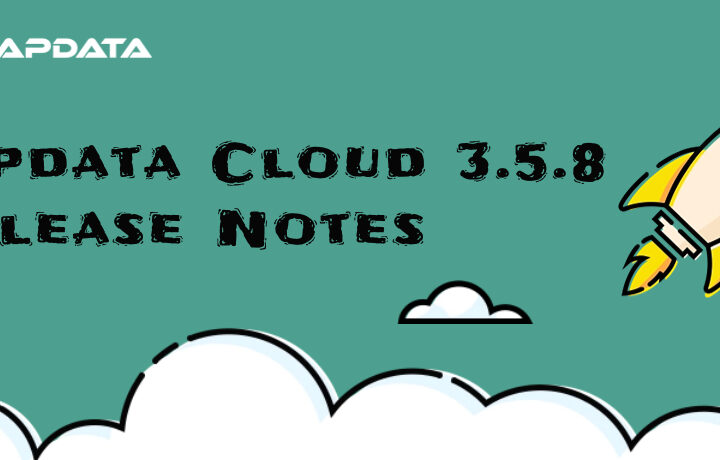
TapData Cloud 3.5.8 Release Notes
New Features ① Added support for Azure CosmosDB as a source, enabling full synchronization. Feature Enhancements ① SQL Server now supports SSL. ② When adjusting the target node field types, you can now directly choose commonly used types in the target database. ③ For source nodes, added the ability to set the number of rows read per batch for incremental synchronization, improving performance. Issue Fixes ① Fixed issues with the enhanced JS node causing errors in certain scenarios and the model declaration not working. ② Fixed various UI and interaction experience issues.
Dec 08, 2023
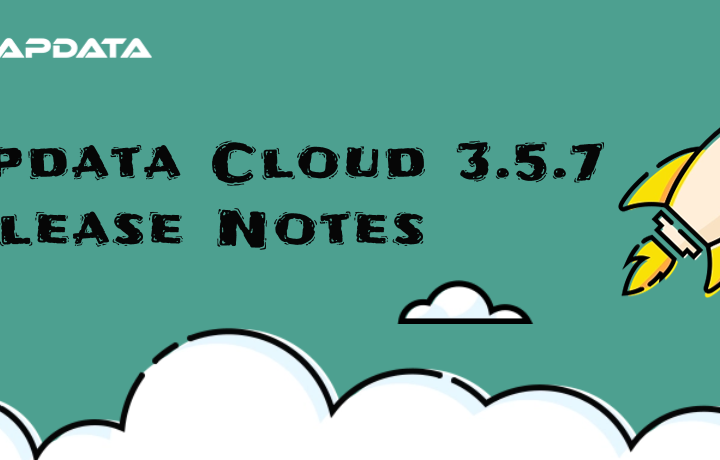
TapData Cloud 3.5.7 Release Notes
New Features ① Oracle synchronization now supports syncing table comments. ② In the task execution monitoring page, QPS (Queries Per Second) has been added to view events based on their size. ③ Optimize user interface interactions. Feature Enhancements ① Optimized and adjusted the UI for resource management and subscription center. ② In the cloud version, added connector download progress display during test connection to avoid test connection timeouts due to waiting for downloads. Issue Fixes ① Fixed the issue where after resetting a task and then running it again, incremental information was not successfully cleared. ② Fixed an issue with...
Dec 08, 2023
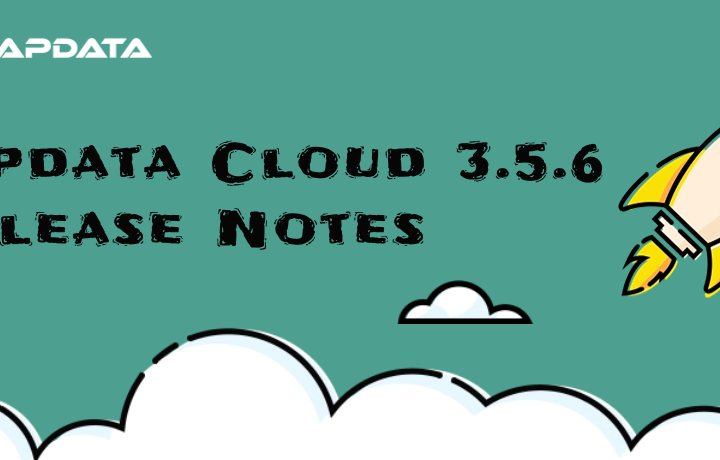
TapData Cloud 3.5.6 Release Notes
Feature Optimization ① Create a unique index for non-primary key update conditions to resolve data duplication issues. ② Optimized data source connectivity, adding SSL connection support for some data sources ③ Optimize user interface interactions. Issue Fixes ① Fixed an error occurring during synchronization when the table name contains a period. ② Fixed an issue where error messages did not include the table name when there was an exception during task data processing. ③ Fixed an issue where, when specifying an Agent for a task, it still showed a task quota reached error.
Nov 10, 2023
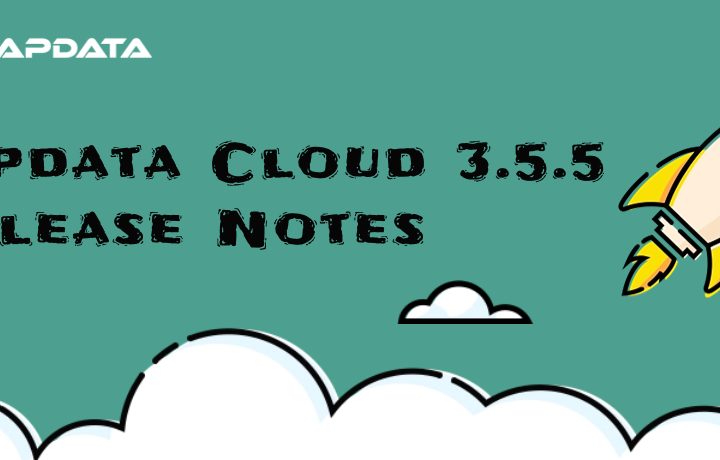
TapData Cloud 3.5.5 Release Notes
New Features ① Added support for creating distributed tables when using MongoDB as a target. ② Added support for disabling node functionality in tasks. ③ Data transformation tasks now include an ‘unwind' processing node. Feature Enhancements ① Enhanced table selection for copying tasks with quick filtering for tables with and without primary keys. Added support for non-primary key tables with unique indexes. ② Unified and optimized handling of abnormal display issues for operation buttons in the engine interface. ③ Added a DEMO data source in the onboarding process, enabling users to use it directly. Issue Fixes ① Fixed the issue...
Nov 10, 2023
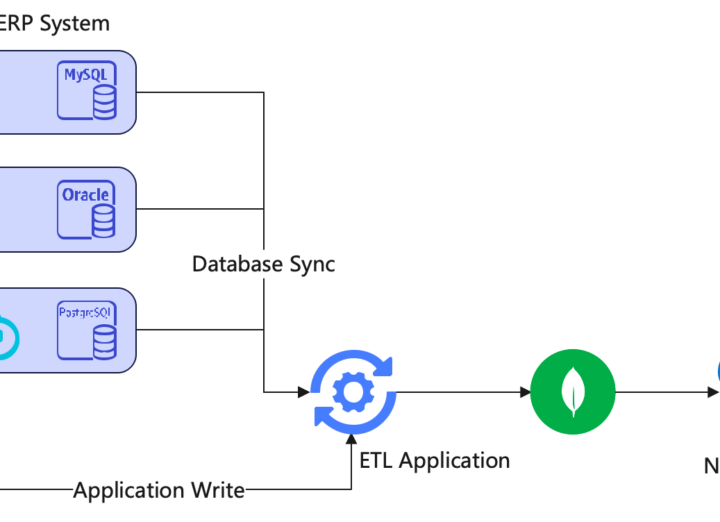
A Convenient Way to Build Real-Time Data Model in MongoDB
Introduction Unknowingly, we’ve arrived in the year 2023, and MongoDB has already released version 7.0. MongoDB has pioneered the unique category of document model databases, bringing us many surprises in terms of products, technology, and business. More and more developers are developing their applications with MongoDB. Often times, when developers are working with MongoDB, they need to move data from existing relational databases into MongoDB to support new use cases. Because MongoDB's unique, denormalized document model, it often means we need to sync data from multiple relational tables into a target JSON. This article is aimed to illustrate a convenient...
Nov 02, 2023

Build A Real Time Data Platform with MongoDB and TapData
In the age of big data, almost every business feels the urge to establish its data platform. Presently, there are numerous offline solutions available, including those within the Hadoop ecosystem like CDH and TDH, along with traditional data warehouses. Yet, two substantial hurdles hinder enterprises: the need for “real-time” data and the imperative of “data fusion.” On one hand, with the constant evolution of IT architecture and the advent of omnichannel marketing on the business front, the demand for real-time data has surged. On the other hand, the legacy of decades of digitalization has resulted in a landscape of data...
Oct 12, 2023
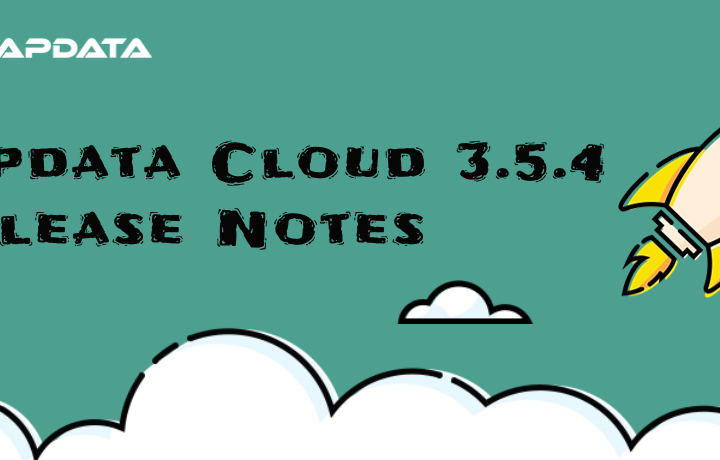
TapData Cloud 3.5.4 Release Notes
New Features ① Added the feature to build materialized views. ② Added unset support for MongoDB to MongoDB synchronization. ③ Added support for retrieving read-only access information for subscribed Atlas databases. Feature Enhancements ① During the task setup process, added instructions for the public IP address of fully managed Agents when establishing connections. ② Improved the field filtering experience for data validation functionality. ③ Added support for searching nodes on the DAG page. Issue Fixes ① Fixed an issue where restarting the Agent would log the operation as an Agent upgrade.
Oct 11, 2023

TapData Cloud 3.5.2 Release Notes
New Features ① Added Python Processor Node, allowing users to process data using Python scripts (requires upgrading to the latest engine version). ② Introduced a “Contact Us” feature for easy access to TapData support when users encounter issues. ③ Added support for Redis-to-Redis synchronization capability. Feature Enhancements: ① Enhanced error code functionality for data sources. ② When configuring email alert notifications and no email is bound, users will be guided to complete the email binding process. ③ Improved notifications for when the maximum task limit is reached, providing a quick access option to guide users in upgrading.
Oct 11, 2023
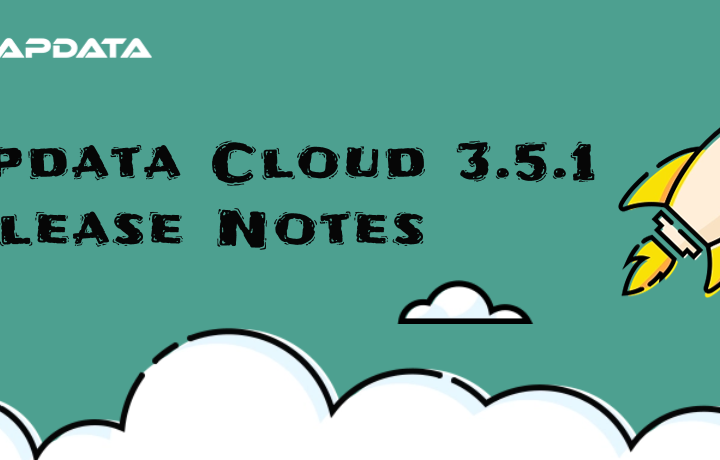
TapData Cloud 3.5.1 Release Notes
New Features ① Added new options for Atlas storage when ordering on the international site: Free trial, M10, M20, M30. ② Added support for adding existing Mongo storage when ordering storage on the international site. ③ Introduced a new feature: Master-Slave Merge Nodes. Functional Enhancements ① The documentation for configuring data sources has been updated to include embedded online documentation. ② Provided parameter guidance for connecting to core data sources during connection creation. Resolved Issues: ① Resolved an issue where previously executed tasks were unable to access the run monitoring page.
Sep 08, 2023
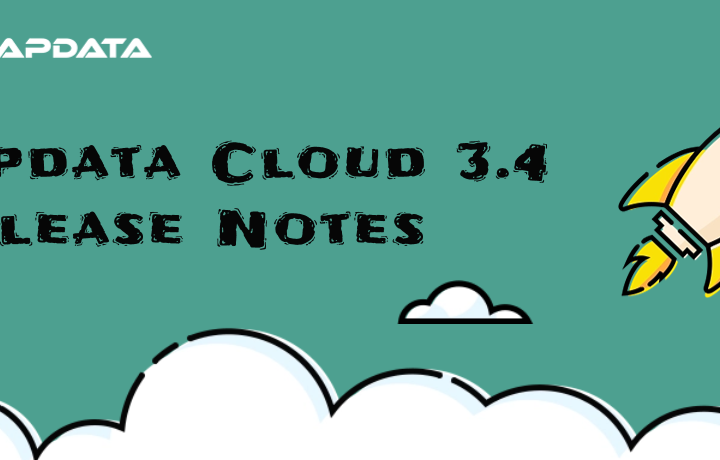
TapData Cloud 3.4 Release Notes
New Features: ① Guided task creation based on the Data Panel. ② Added a new Dashboard page. ③ Added support for DWS data source as a target. ④ Added an initialization guide for the Real-time Data Center. ⑤ Added domestic B2B payment method. Feature Enhancements: ① Integration of data replication and Data Panel. ② Optimized payment confirmation page. ③ Improved and adjusted the process for creating calculation engines. ④ Enhanced data validation usability. ⑤ Implemented error codes for MongoDB data source. ⑥ Incremental delay indicator on the left side of the runtime monitoring page now uses the Y-axis for task...
Sep 08, 2023
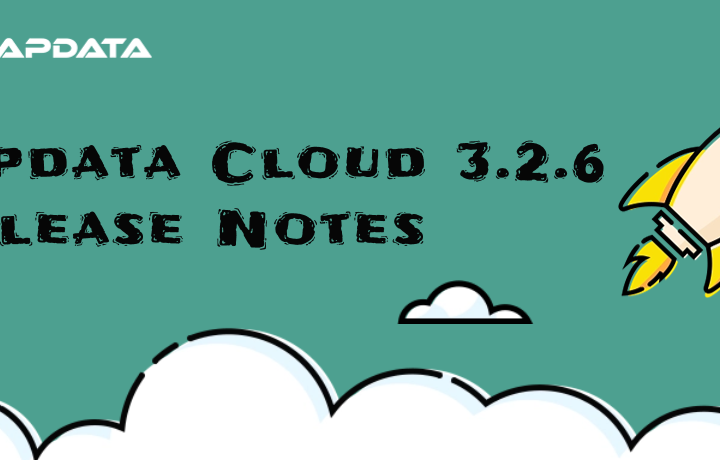
TapData Cloud 3.2.6 Release Notes
New Features: ① Data replication/development tasks now support dynamically adjusting batch parameters based on data record size. ② For full and incremental tasks, added support for scheduled reruns. ③ Implemented the process for free users to upgrade to paid subscriptions. ④ In the add/delete field node, added the ability for automatic sequential adjustment. Resolved Issues: ① Adjusted the recommended task count in the engine specifications to enforce a mandatory task quantity limit.
Sep 08, 2023
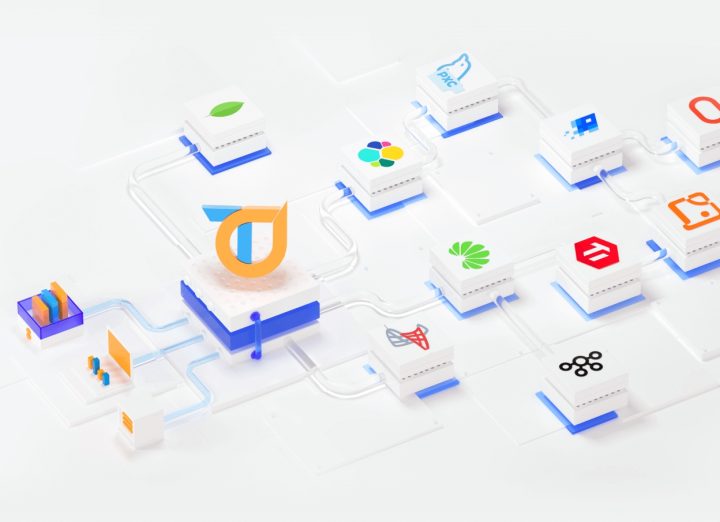
Easily replicate data from MySQL to BigQuery
Are you seeking a streamlined approach to enhance your organization's data management and analytics capabilities? Look no further. This article introduces an excellent solution for replicating data from MySQL to BigQuery, offering a minimalist yet powerful approach to optimize your data integration process. Unlock the Power of Data with BigQuery Data Sync Replicating data from SQL Server to BigQuery can offer several benefits, including: Scalability: BigQuery offers scalable data storage and processing, allowing you to handle large datasets and scale your analytics capabilities. Cost-effectiveness: By replicating data from SQL Server to BigQuery, you can reduce operational costs associated with...
Jul 25, 2023

Open Source License, Welcome to the Cloud Era
Preface Open source licenses have evolved from the original GPL to GPLv2 and GPLv3, along with Apache, MPL, AGPL, LGPL, etc. But a number of new licenses have emerged in recent years, causing some heated discussions in the community. These new licenses include BSL, SSPL, Elastic, and a special addition called Commons Clause. The community is mainly divided into two camps from the perspective of argument: Fundamentalism and Pragmatism. Fundamentalist followers believe that only those who comply with the 10 principles defined by the Open Source Initiative (OSI) established in 1998 and pass the OSI certification (get OSI-Certified) can be...
Jul 25, 2023

Comparing Methods: Replication from MySQL to MongoDB – Find the Best Approach
Are you struggling to find the best approach for replicating data from MySQL to MongoDB? Look no further! In this blog post, we will dive deep into the world of replication methods, comparing the performance, scalability, data consistency, flexibility, and ecosystem support of both MySQL and MongoDB. Whether you're a developer, database administrator, or simply curious about the differences between these two popular databases, this comprehensive comparison aims to provide you with all the information you need to make an informed decision. So, let's explore the world of replication methods and find the best approach for your specific needs! Overview...
Jul 15, 2023
